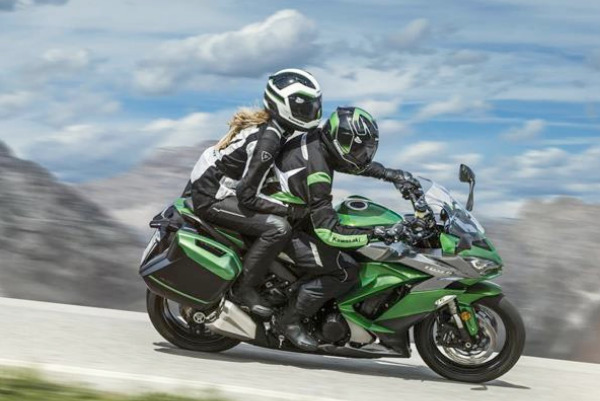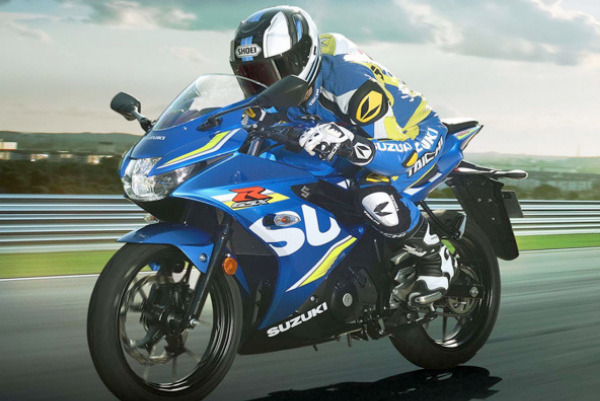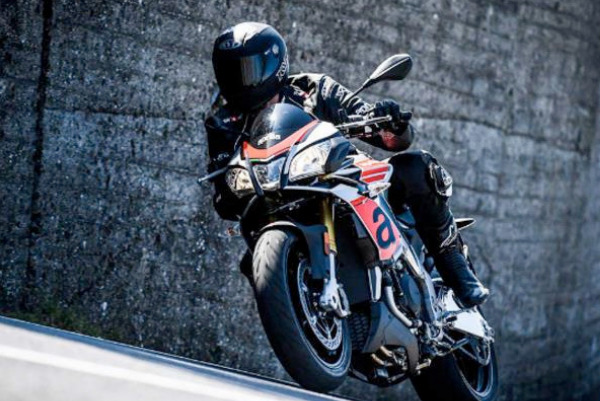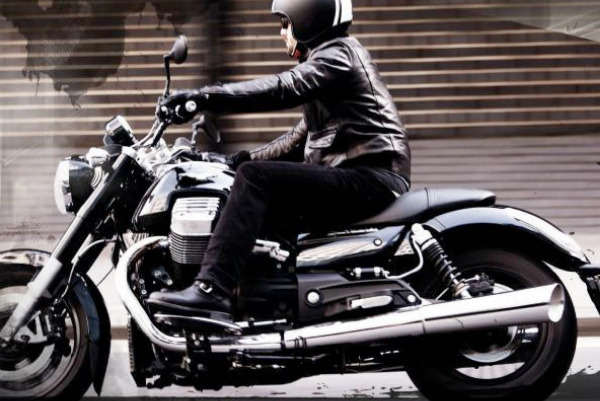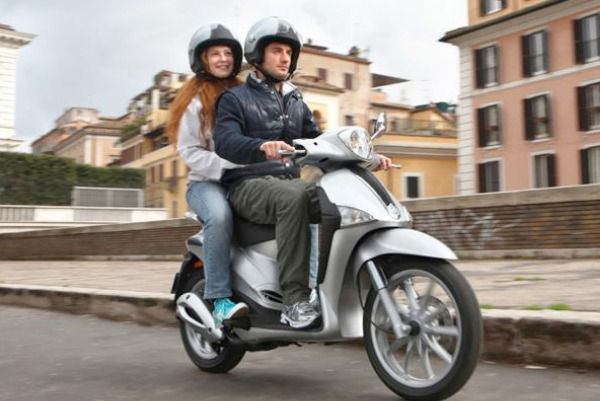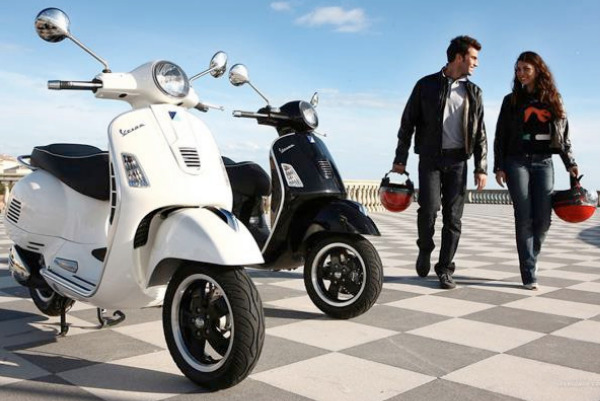SUZUKI STAY WARMER WITH SUZUKI WITH 25% OFF HEATED GRIPS
Suzuki is helping riders stay warmer this winter, by offering 25% off all heated grips from 1 November 2019 until the end of February 2020.
Genuine Suzuki heated grips are available for the firm’s V-Strom range, as well as the GSX-S1000 and GSX-S1000F, plus the entire scooter lineup, from Burgman 400 to Address 110.
The offer can mean a saving of over £80, depending on the model.
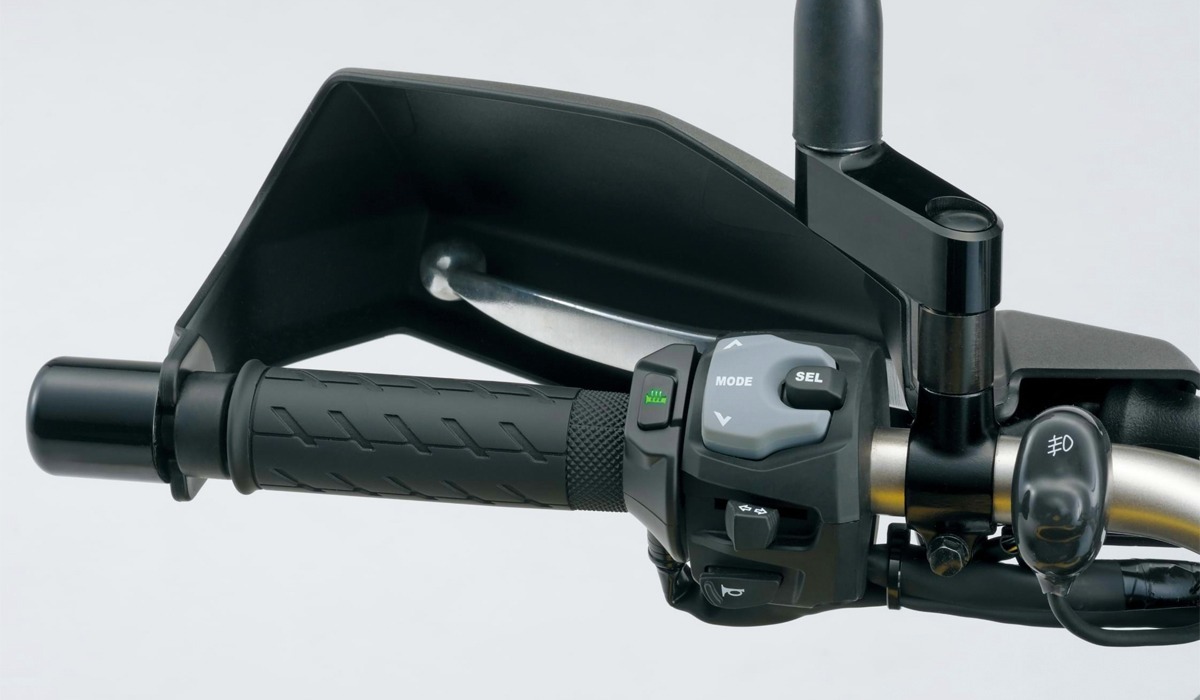
Suzuki’s genuine accessory range also includes items such as centre stands, hand guards, top boxes and panniers, and taller screens.
SUZUKI DISPLAYS NEW COLOURS FOR 2020 AT MOTORCYCLE LIVE
Suzuki has displayed new colours for its 2020 model range at Motorcycle Live, which is currently taking place at Birmingham’s NEC.
The GSX-S1000 super-naked – which uses the legendary GSX-R1000 K5-derived engine packed with grunt and character, housed in a lightweight twin-spar aluminium chassis and kept in check by a three-mode traction control system – comes in a new grey and matt black for 2020, set off by dark red accents and matching wheels, alongside a white version with blue detailing, and a MotoGP-inspired blue.
The same white and blue colour schemes are also available on the GSX-S750 and leaner-friendly GSX-S125. The 750 can also be had in a striking white, black, and dark red option, while the 125 is available in a standout matt grey and black. Both get red wheels.
An all black version of the GSX-S1000F – which adds a wind-cheating fairing and screen to the GSX-S1000 package to create the comfy sports bike – will be available in 2020, along with a blue and black variant and white version with subtle blue graphics.
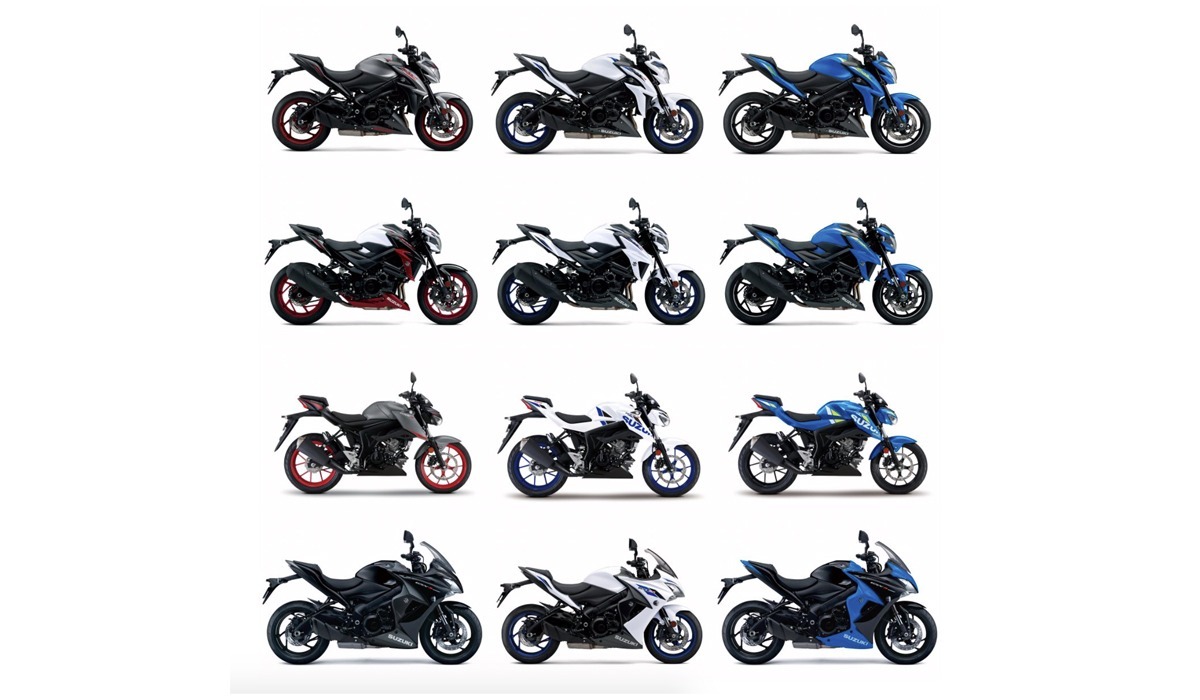
Three MotoGP-inspired liveries on the GSX-R125 – the race replica blue with white SUZUKI lettering, an inverted white with blue lettering, and a black with red lettering – match the liveries of the 2020 GSX-R1000R.
The GSX-R1000 also comes in the MotoGP blue, but is joined by a white and black version and an all-black edition.
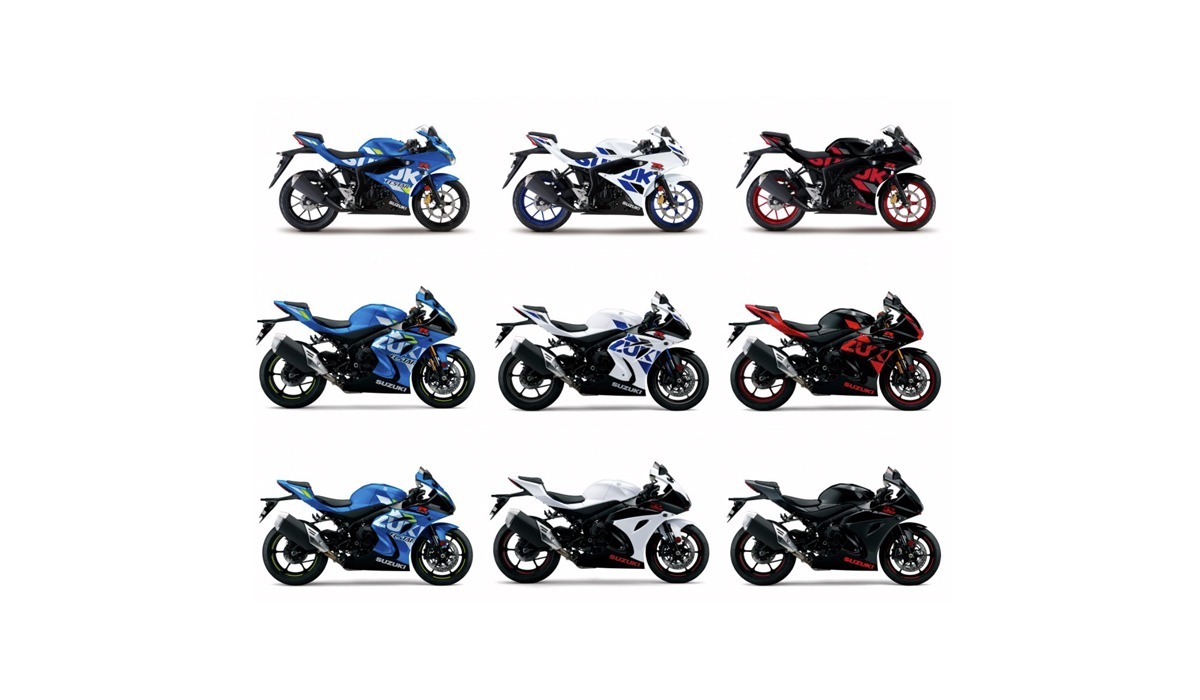
Off the back of launching its new V-Strom 1050XT and V-Strom 1050 at Eicma earlier this month, Suzuki has updated the colour options on the V-Strom 650XT and V-Strom 650 middleweight.
The more off-road focussed XT gets a revised version of the firm’s motocross yellow with gold spoke wheels. A black model gets the same rims, while a blue version uses black wheels.
Three colour schemes for the V-Strom 650 include a white, black, and solid grey.
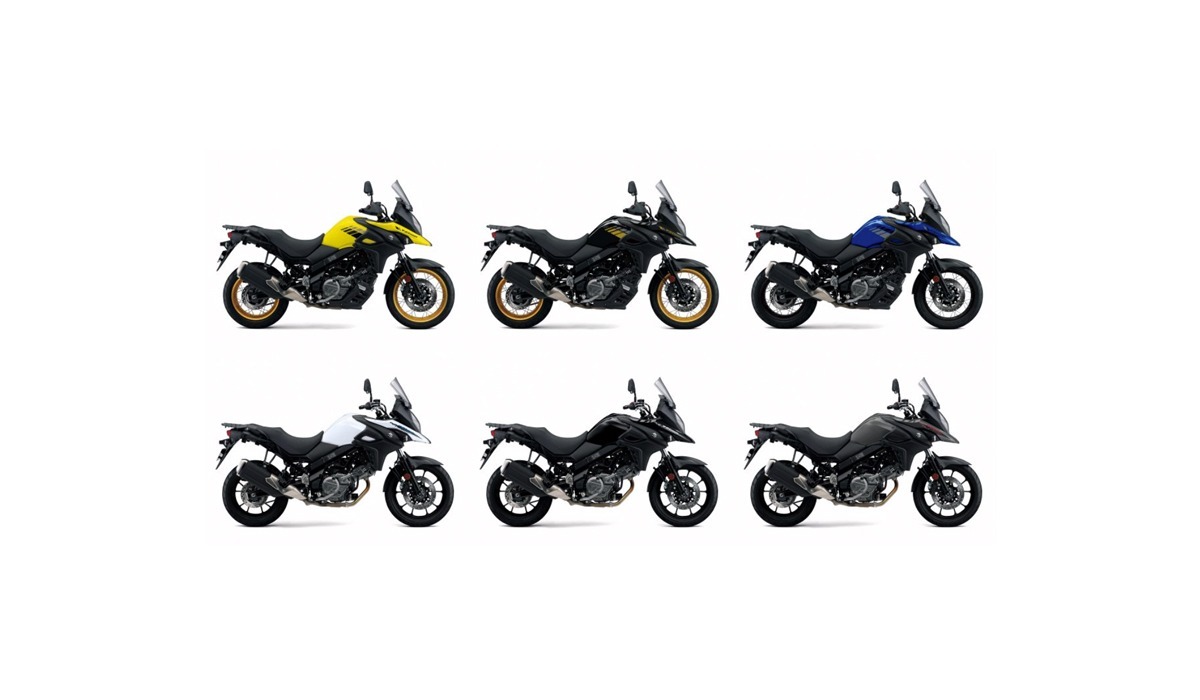
Suzuki’s scooter range – which includes the Burgman 400, the original maxi-scooter – also gets new paint. The Burgman 400 can be had in white or black with classy dark blue wheels, or dark blue with black wheels.
White and silver are the options available for the Burgman 125 and Burgman 200, while the congestion-busting Address comes in a royal blue or dark blue, or gloss white.

2020 colours for Suzuki’s SV650 include a metallic silver and blue trellis frame, a matt black version uses a similarly striking red frame and wheels, while those looking for a more understated SV650 can opt for a gloss black model with black frame and wheels.
The café racer-inspired SV650X comes in black with a brown ribbed seat.
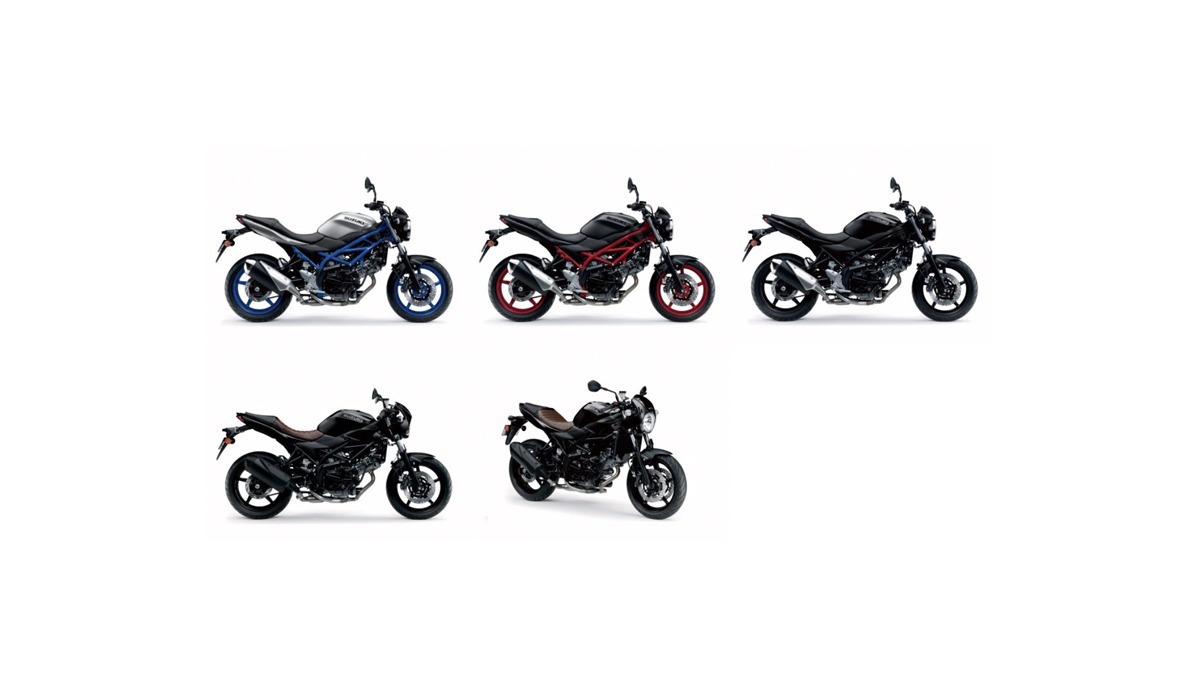
NINJA 400 KRT EDITION
A&D Motorcycles are currently offering £1,000 off a brand new 2019 Ninja 400 KRT Edition. Now at the special price of £4,499 otr instead of £5,499.
The Ninja 400 is an impressive, sharp-styled and accessible street focused sports machine offering excitement and ease of riding.
In a league of its own the Ninja 400 offers large volume bodywork with hints of Ninja H2, and Ninja ZX10-R styling attracts attention and gives a greater level of wind protection. The Ninja engine delivers improved power and torque over its 300cc predecessor; the smooth response and abundant low-end torque aid throttle control for new and experienced riders alike. The Assist and Slipper clutch offers a lighter clutch feel and prevents rear wheel skipping on quick downshifts. LED tail light is inspired by the ZX-10R and LED headlamps contribute to the sharp looks and high visibility. The sophisticated instrument design features a large analogue tachometer with warning lamps on one side, and a gear position indicator and multi-function LCD screen on the other.
The Ninja H2 style trellis frame contributes significantly to its light weight of 168 kg. Other features include ABS brake system – sporty 41 mm telescopic front suspension – bottom link uni-trak rear suspension – economical riding indicator – gear position indicator – low 785 mm seat height – assist and slipper clutch – 14 litre fuel tank – generous wind protection – Ninja H2 inspired chin spoiler – LED headlight – A2 Licence compliant – 45 PS – 399 cm parallel twin engine.
It's those little touches that encourage you to fine tune your Ninja 400. Kawasaki Genuine Accessories carry factory warranty and personalise the overall look of your Ninja. Ask any of the team about upgrading to the Performance Edition, which includes a titanium Akrapovic silencer, pillion seat cover and tank pad.
With many finance options available through K-Options now is the time to give any of the team a call on 01745 815105.
VESPA AND SEAN WOTHERSPOON
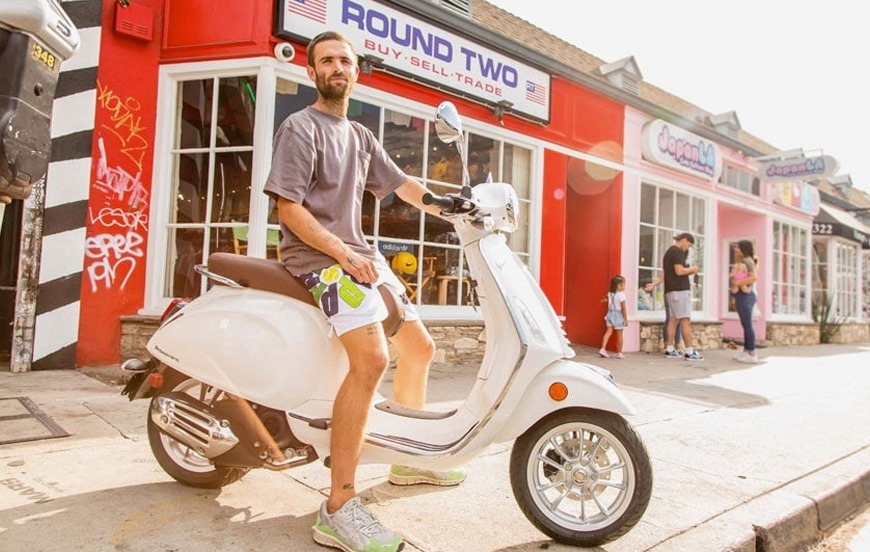
VESPA AND SEAN WOTHERSPOON ANNOUNCE PARTNERSHIP BETWEEN ONE OF THE MOST CREATIVE AND INFLUENTIAL YOUNG DESIGNERS AND THE ICONIC BRAND FOR STYLE ON TWO WHEELS
A CAPSULE COLLECTION AND A LIMITED VESPA EDITION FOR SPRING/SUMMER 2020, TO BE PRESENTED AT THE EICMA SHOW IN NOVEMBER 2019 MICHELE COLANINNO: “THE FIRST IN A SERIES OF COLLABORATIONS TO CREATE CLOSER TIES FOR OUR BRANDS WITH THE WORLD OF DESIGN AND FASHION”
Los Angeles (USA), 6 September 2019 – Sean Wotherspoon and Vespa have announced a partnership to create a new style: bold, irreverent and fun, for those who express a unique and youthful spirit in and beyond the urban environment.
The Piaggio Group has always had a keen eye for the ever-changing trends and experiences that motivate and inspire today’s generations. Sean Wotherspoon seemed like the perfect partner to share and implement innovative ideas.
Sean Wotherspoon is one of the rising stars of youth fashion in the USA. Pure energy, unstoppable and curious; a forerunner, an experimenter, a fanatic of street culture and of everything it can encompass.
Instagram is the world through which he communicates and shares his passion, and his almost one million followers adore him. As the Nike Air Max 97 sneakers that made him famous testify,Wotherspoon plays with colors, mixing them together and adding innovative and sometimes unlikely materials together with the most disparate fabrics.
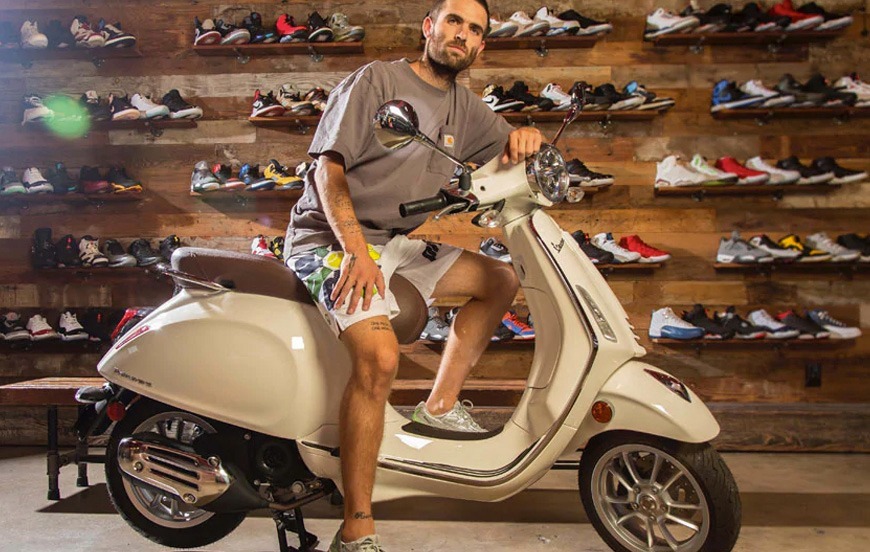
Promoting this culture of color Sean Wotherspoon’s mission and the endeavor with Vespa came naturally. The idea that immediately fascinated the designer starts from a “vintage” soul perfectly revisited in a contemporary key, as the DNA of the Vespa brand demands. The partnership aims to create a community of individuals around the brand who want to have fun not only with personal fashion tastes, but also, and above all, by making style and carefree enjoyment their primary colors on the streets. No brand outside of Vespa could interpret this challenge better and more consistently.
So Wotherspoon will define the aesthetic standards of a special and limited-edition Vespa Primavera further complimented with a dedicated helmet and an exclusive streetwear capsule collection. The first results of this creative process will be presented in November 2019 at EICMA in Milan, with the collection, that is already exciting Vespa enthusiasts and fans of Sean Wotherspoon, being released globally in Spring 2020.
Sean Wotherspoon did not hide his enthusiasm about the partnership: “Based on their immense history and heritage I’m beyond excited to start work with Vespa/Piaggio. I’m going to dig as deep as possible to help re-create these memories and re-imagine them through my lens to share with everyone! This is going to be insane! Stay tuned!”
“We are delighted to begin working with Sean,” said Michele Colaninno. “He is one of the most gifted and creative designers in the USA. We immediately struck up a great rapport and there is no question that something spectacular will come out of this….This is only the beginning of a series of collaborations starting soon that will bring Vespa and our other fantastic brands like Moto Guzzi and Aprilia into even greater contact with the world of design and fashion, where they naturally belong.”
About Sean Wotherspoon
In 2013, Sean along with two friends opened Round Two in Richmond, Virginia, a store destined to become legendary in a matter of months. Today, there are Round Two stores in all the leading US cities. The passion for sneakers and sportswear of the past decades, the love for creativity and color that characterized the 80s and 90s and then a revolutionary and irrepressible creative verve are the basis of a global success that led Sean to collaborate first with Nike and then with giants like Disney, Prince, Lacoste and Galleries Lafayette.
About Vespa
It was 1946 when Vespa made its debut on the roads of a Europe devastated by the recent conflict but, equally, full of creativity and a desire for renewal. After seventy-three years of history and over eighteen million scooters, Vespa is a global reference for style, elegance and technology. A brand known and loved all over the world that, with more than one and a half million vehicles produced in the last decade, is experiencing one of the most fortunate and dynamic periods in its story.
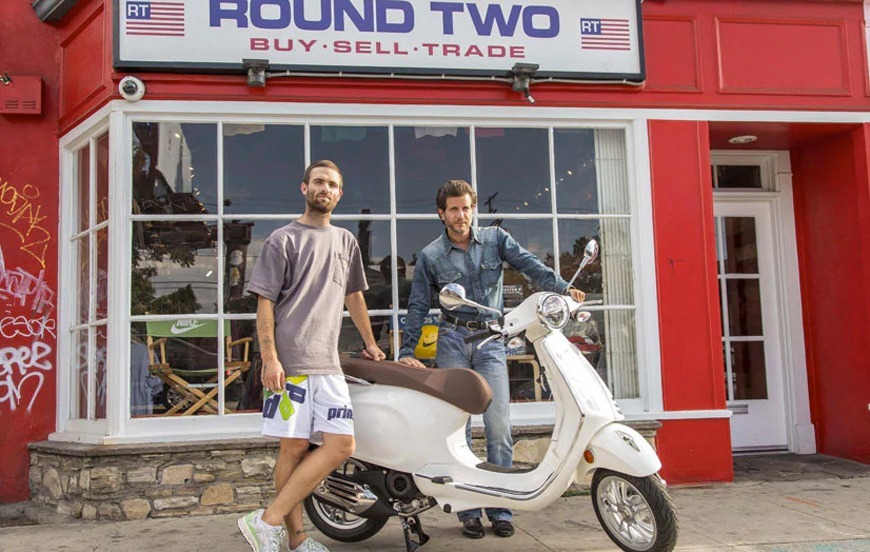
NEWEST MEMBER OF GTS FAMILY SCOOPS AWARD IN 2019 AUTO TRADER BEST BIKE AWARDS
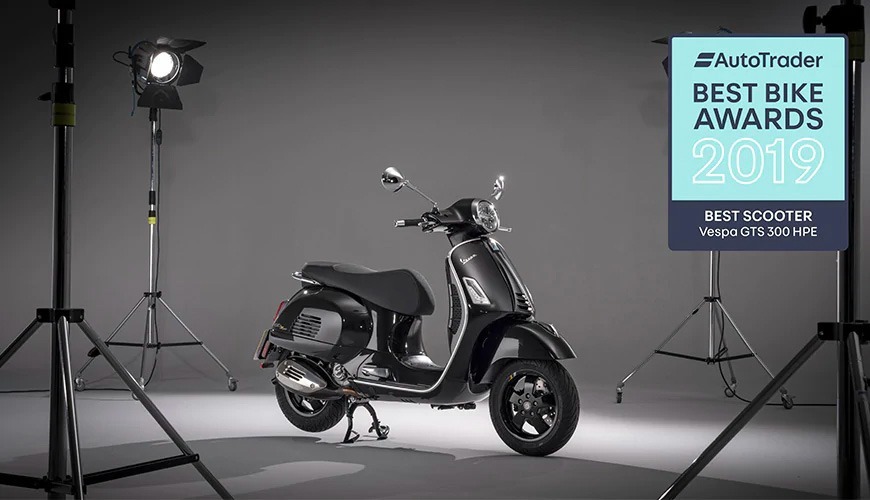
Auto Trader has named the Vespa GTS 300 hpe SuperTech as the Best Scooter in its annual Best Bike Awards.
As the judges’ favourite in the hotly contested Scooter category, the GTS 300 hpe SuperTech beat competition from BMW and Honda to win the award. When asked about the winning bike, Guest Judge Jon Quirk said, “Vespa is the only scooter company that manages to elevate a seemingly ordinary device into a functional art form. The GTS 300 remains the definitive scooter with its unique style and, in HPE form, improved performance. It remains a class act.”
Simon Greenacre, Marketing Communications Coordinator at Vespa/Piaggio Group in the UK said, “It’s great to see the newest member of the Vespa GTS family getting this kind of recognition. The GTS 300 hpe SuperTech is the most powerful Vespa we’ve ever made and is also packed with technology to make it a joy to use own and use, so we're pleased that it carries the GTS name forwards with this award.”
New for 2019, the SuperTech is the flagship GTS 300 hpe and the latest addition to the Vespa GTS 300 range. Featuring a colour TFT display with smartphone connectivity and a new high-performance engine (hpe), the most powerful seen on a Vespa with over 23 hp, the new SuperTech is the flagship Vespa, a model that carries Vespa’s style, heritage and hostroy of riding pleasure in to the future with while being packed with technology and innovation.
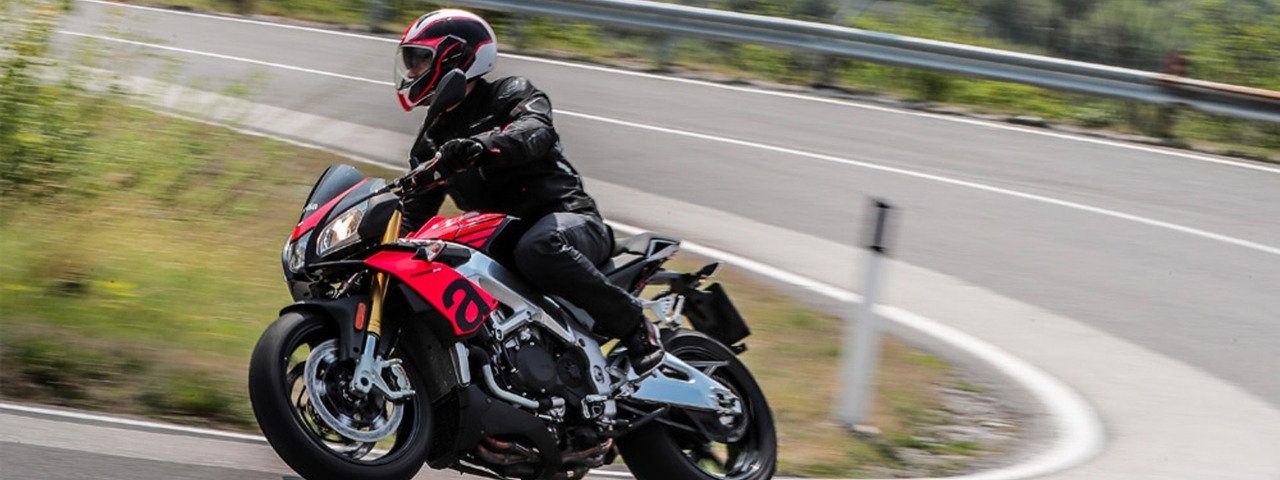
Tuono V4 1100 Factory voted Best Super Naked in 2019 MCN Awards
Tuono V4 1100 Factory recognised as class-leader in annual Motorcycle News Awards
Aprilia is proud to announce that the Tuono V4 1100 Factory has won the award for Best Super Naked in the 2019 MCN Awards.
The Tuono V4 1100 Factory beat competition from rival manufacturers including BMW, KTM and Yamaha to take the prize for Best Super Naked in the 2019 MCN Awards, the results of which were announced today.
For 2019 the top-spec Factory model benefits from the addition of Öhlins Smart EC 2.0 semi-active suspension and steering damper. After riding the bike at its launch in Italy Michael Neeves, MCN’s Chief Road Tester said, “Aprilia have somehow managed to improve the unimprovable.” Read his full review here and watch the review here.
Simon Greenacre, Marketing Communications Coordinator at Aprilia/Piaggio Group in the UK said, “The Tuono V4 1100 Factory is a sensational package. It’s all there on paper – an astounding V4 engine complimented by a suite of cutting-edge electronics and high-spec parts from the likes of Brembo and Öhlins, all built around the frame from the RSV4 superbike. The result when riding is a perfect blend of power, poise, precision and pleasure. The Tuono V4 1100 Factory is often hailed as the perfect sports road bike and Aprilia is delighted that MCN has recognised its excellence with this accolade.”
Representing state-of-the-art in technology, the Tuono V4 1100 Factory is equipped with sophisticated electronic management that includes an advanced dynamic controls package with APRC, cornering ABS, quick shift active even in downshifting, pit limiter and cruise control. The unique 175 hp 65° V4 engine and racing frame provide unparalleled performance. Simply unrivalled, the Aprilia Tuono V4 has consistently been voted as one of the most exciting and exquisite motorcycles ever built.
The award for Best Super Naked from MCN is the second to be bestowed on the Tuono V4 1100 Factory in 2019, with the first coming from Auto Trader, which decreed the top-of-the-range Tuono to be its Best Naked in its 2019 Best Bike Awards.

SUZUKI TO RESTORE MORE SHEENE BIKES AT MOTORCYCLE LIVE
Three more of Barry Sheene’s race bikes have arrived at Suzuki GB from the family home in Australia, and two of them will be restored at this year’s Motorcycle Live, which takes place at Birmingham’s NEC from 16-24 November.
Watch the arrival and uncrating of the bikes in the video below:
Sheene’s last Grand Prix bike – a DAF Trucks-sponsored 1984 Harris-framed XR45 RG500 – arrived alongside a 1978 XR27 RG500 and a special XR23A 652cc big bore RG500, raced in the Trans Atlantic series and F1 Championship in 1979.
In conjunction with Suzuki’s Vintage Parts Programme, both the XR45 and XR23A will be refurbished and fired into life once again at Motorcycle Live, while the XR27 will be displayed alongside Sheene’s 1976 and 1977 world championship-winning XR14s, both of which were also restored thanks to the Vintage Parts Programme in 2017.
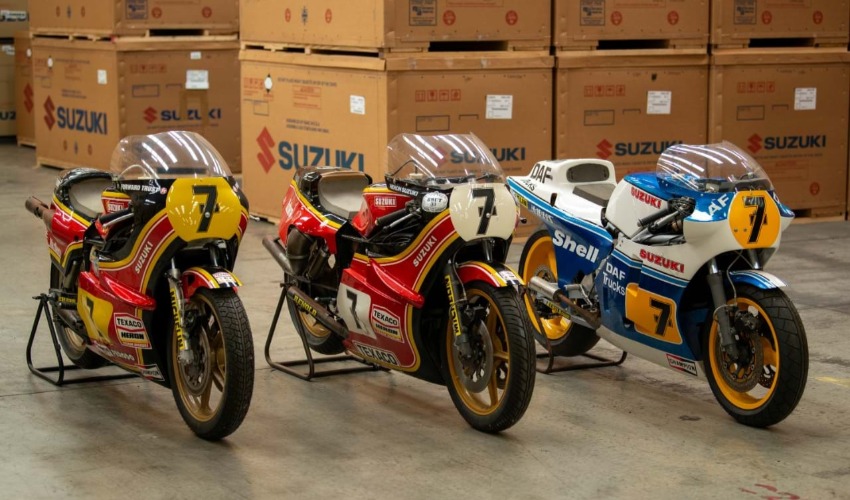
Suzuki GB aftersales marketing coordinator, Tim Davies, said, “This is another special moment for us. These bikes haven’t been back in the UK since Barry and his family emigrated to Australia, so it’s quite something to get them out of the crates and see them here again. But it’s going to be even more of a special occasion when they live again, thanks to the restoration process which will be carried out by former ‘70s and ‘80s Grand Prix technician Nigel Everett and former mechanic for Barry Sheene, Martyn Ogborne. And it’s a great opportunity for fans to again see, hear, and smell them as they would have existed at the time. We can’t wait.”
Launched in 2013, Suzuki’s Vintage Parts Programme exists to help owners of older Suzukis keep their machines maintained or help with restoration projects, with a host of parts available from cylinders, pistons, and conrods, to a range of bearings and seals, and everything in between.
For more information visit https://bikes.suzuki.co.uk/vintage-parts-programme/

SUZUKI GSX-R1000 WINS NATIONAL SUPERSTOCK 1000 CHAMPIONSHIP
The Suzuki GSX-R1000 has won the 2019 National Superstock 1000 Championship at the hands of Richard Cooper and the Buildbase Suzuki team.
With two rounds to spare, a double victory at Oulton Park last weekend [6-8 September] gave Cooper an unassailable series lead in a championship where he has finished on the podium at every round apart from one, including 11 wins.
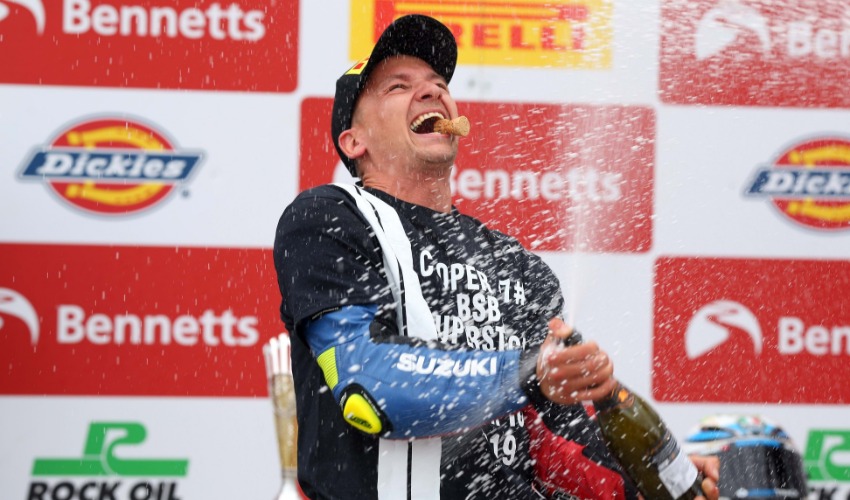
Cooper said after his title win, “It was ours to lose at Oulton but we approached the weekend in the same way we always do and in the way that’s seen us on the podium at every round bar one. Honestly, we’ve hardly touched the bike from round to round because it’s so rider-friendly. So then you’re riding the same bike each time you go out and just get more and more comfortable and more and more confident and can go out and enjoy yourself.
“In my opinion we’ve got the best all-round package on the grid. Other bikes have their own strong points, but when you look at every element, every aspect, I think it’s hard to argue otherwise, just because of how consistent and how strong it’s been at so many different types of circuit.”
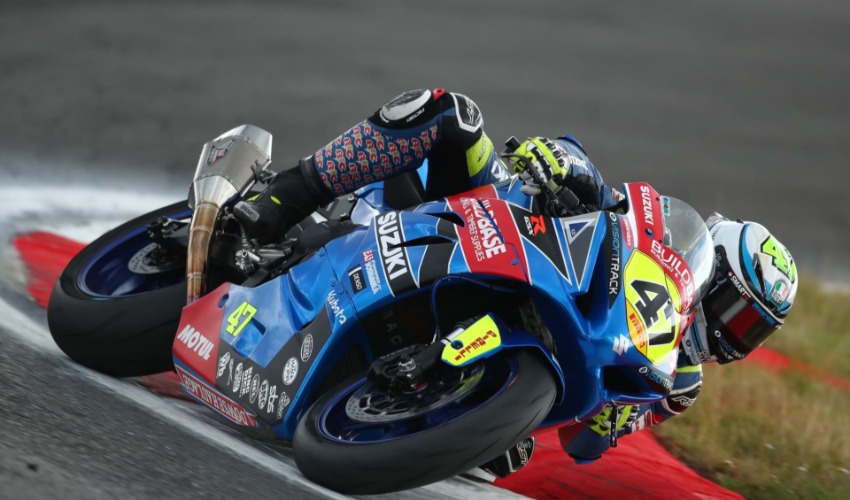
Suzuki GB head of motorcycles, Jonathan Martin, said, “The GSX-R1000 has proven itself as a competitive package since its launch, winning races and titles not only in the UK, but also across the world including MotoAmerica, Australian Superbikes, and around the Isle of Man TT course. The Buildbase Suzuki team turned it into a race-winner here at the first time of asking in 2017, and have now delivered an incredible title, for which we are incredibly thankful and proud.”
The GSX-R1000 and GSX-R1000R – both of which are currently available on 0% APR finance – inherit a host of technology developed on Suzuki’s GSX-RR MotoGP racer, including the inline four-cylinder engine’s variable valve timing, chassis design, and suite of electronics that features a bidirectional quickshifter, 10-mode traction control system, and launch control on the R. The R It also gets cornering ABS, adjustable swingarm pivot and Showa’s Balance Free suspension.
NEW COLOURS FOR 2020 SV650AND ADDRESS SCOOTER.
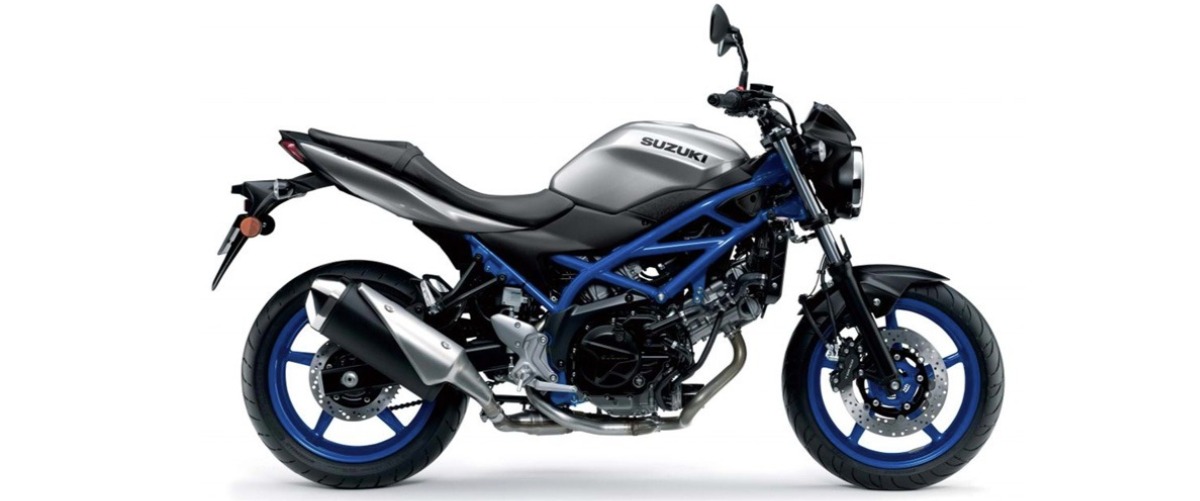
Suzuki has shown its new colour options for the 2020 SV650 and Address scooter, which are available from UK dealerships this month.
The ever-popular SV650 comes in a new metallic silver with an eye-catching blue trellis wrapped around its punchy 645cc V-twin engine and blue wheels. A matt black version uses a similarly striking red frame and wheels, while those looking for a more understated SV650 can opt for a gloss black model with black frame and wheels.
Boasting 135mpg, the frugal and congestion-busting Address scooter also comes in a trio of colours for 2020. A simple pearl white is joined by a bright Suzuki blue, plus a classy, dark, matt stellar blue option.
The 2020 SV650 comes with an RRP of £5,999, the Address is available for £2,199.
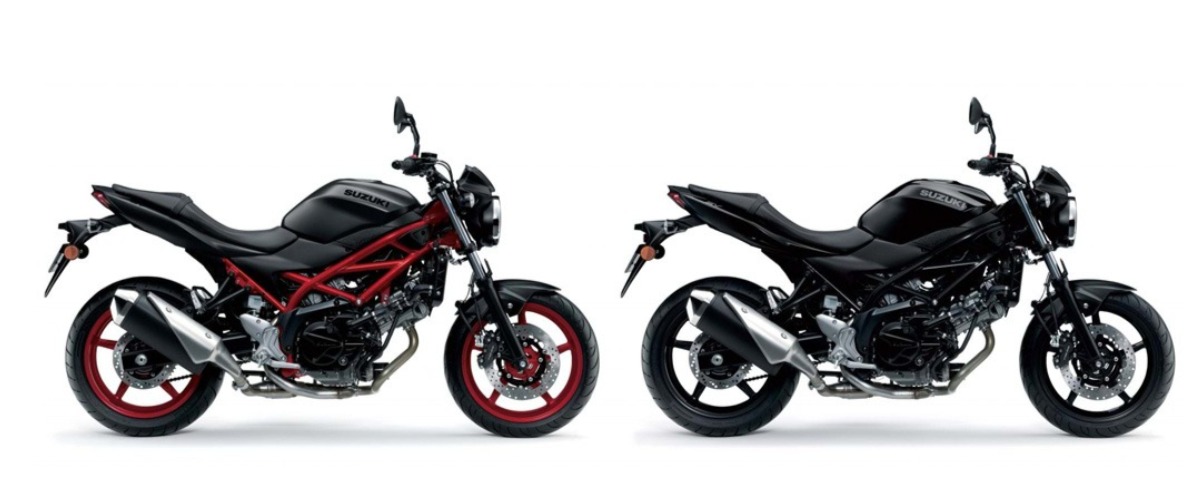
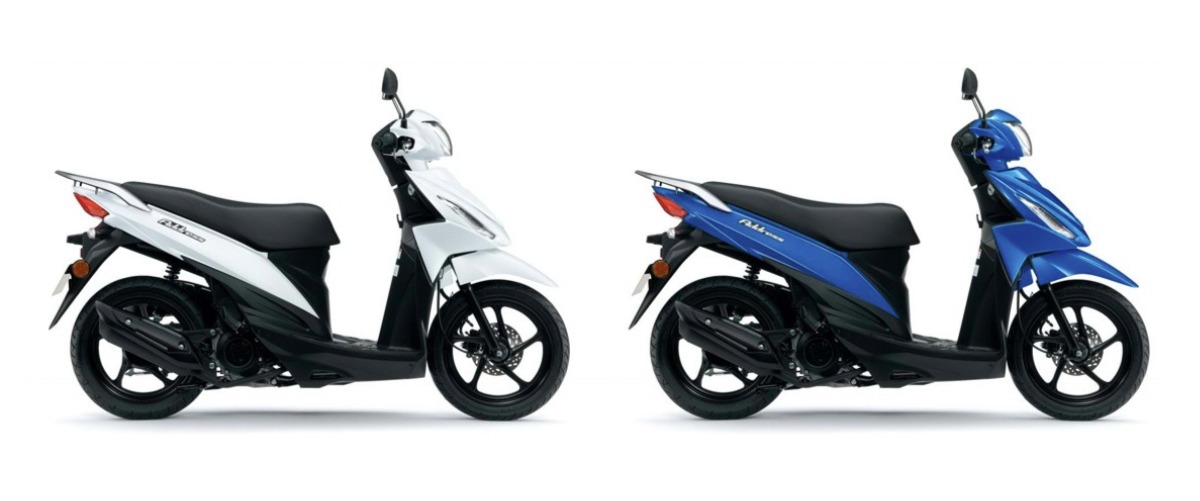
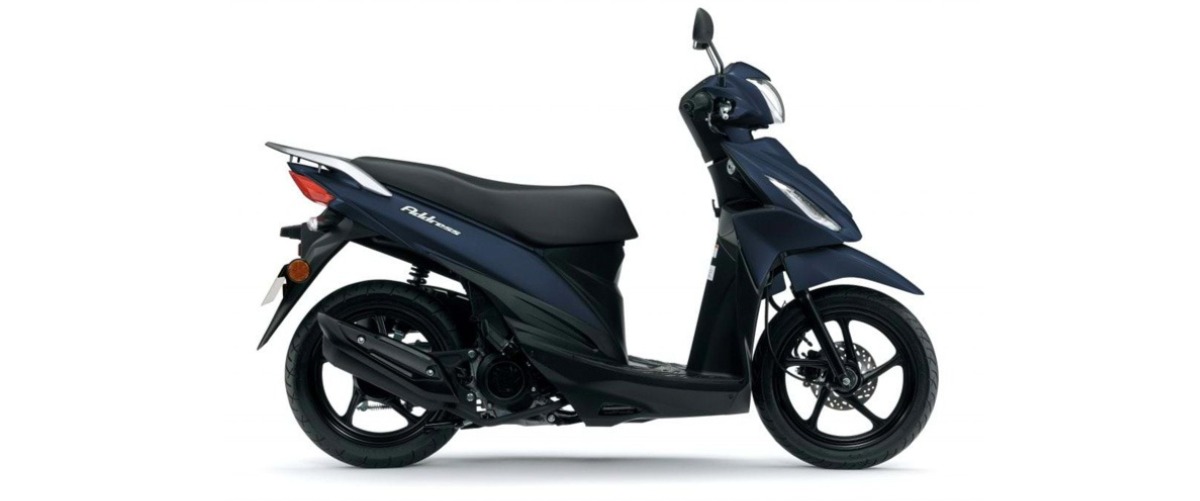
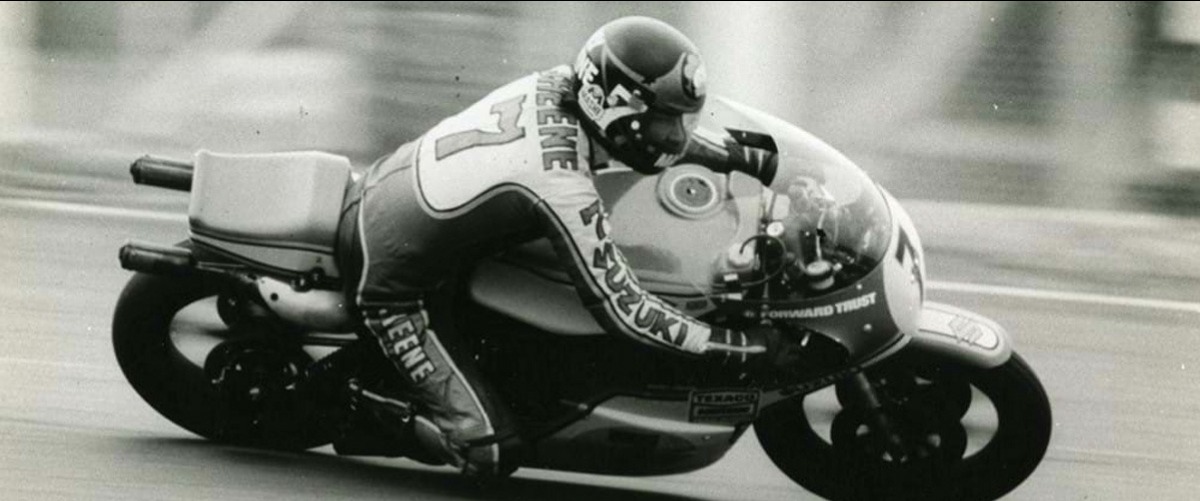
A STROKE OF GENIUS
Over 40 years ago Suzuki changed the face of 500cc GP racing with the release of the two-stroke square four XR14. This, and subsequently the legendary customer RG500 went on to win seven consecutive 500GP championships, four rider world titles, and allowed privateers to compete for GP glory on an equal footing with factory teams for the first time. One of the men responsible for this machine was Makoto ‘Big Mac’ Suzuki who, alongside Makoto Hase, developed and built the RG500 that in 1976, with Barry Sheene onboard, delivered Suzuki its first 500GP world title.
In the early 1970s, the thought of entering 500GPs with a two-stroke motor was laughable. ‘Smokers’ were confined to the tiddler classes. However despite all this, in 1974 Suzuki went against convention and entered the championship using a 500cc two-stroke that would go on to dominate the world.
“People thought we were crazy as two-stroke engines were only used on small bikes, but that was all Suzuki knew, we didn’t build four-strokes,” remembers Makoto Suzuki. “The decision was made for us, we had no option so we looked at our small capacity bikes. We had already built square four and V4 125cc and 250cc race bikes, so we upsized them. We started the project in 1973 with the target of being ready for the 1974 season and only had four people were working on it – two for the engine and two for the chassis.”
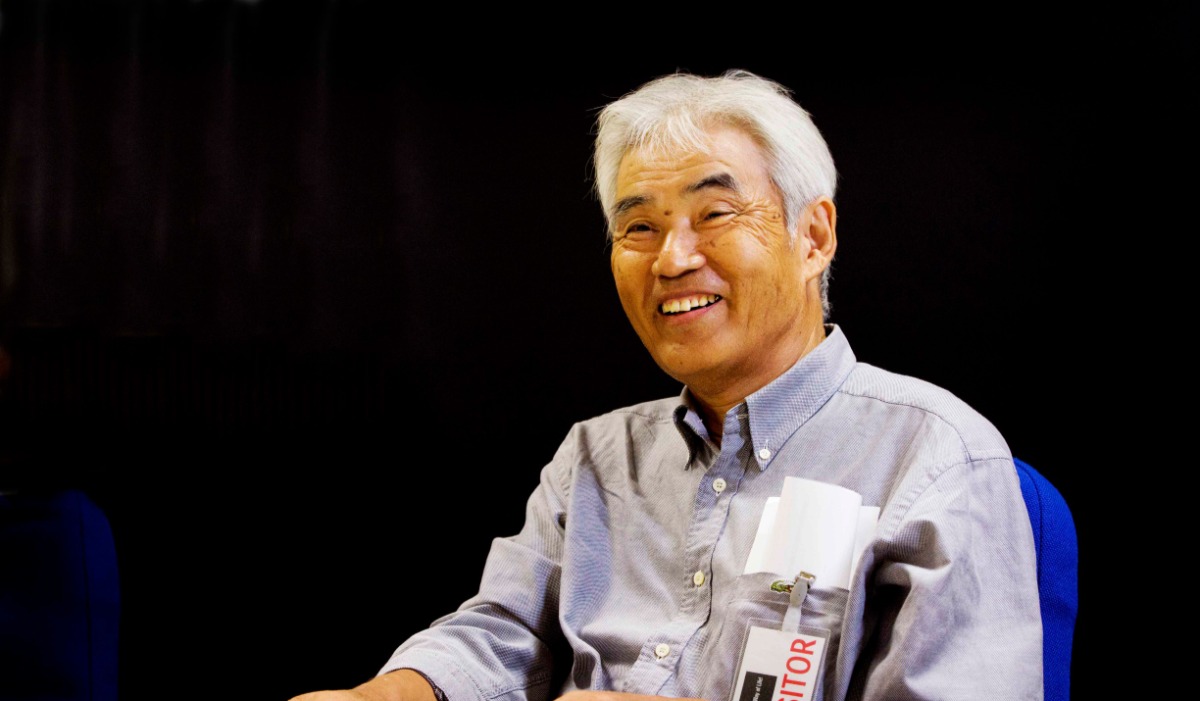
Although nowadays GP racing has reverted to four-stroke, the bike that Suzuki built demonstrated that two-strokes are very good at producing power. While this was good news for the engine’s development team, the chassis engineers were faced with some tough challenges.
“With the bike we aimed for over 100bhp, but it made 110bhp in the end,” said Makoto Suzuki, “which would have been an issue for the chassis had we not been racing the XR11 in America. The XR11 was a 750cc triple with lots of power so we had all the chassis issues with this bike. In America we suffered torn tyres, snapped drive chains, overwhelmed suspension, it was terrible, the chassis development was so far behind the engine.
“For the RG500 we used the knowledge from the XR11 to build a good chassis, however the engine was very hard to ride and peaky. The power was produced from 8,000 – 10,500rpm, that was it, but the GP mechanics at the circuit could alter these characteristics with exhausts and jets at the circuits. At that time there was a lot of experimentation and development happening, we were looking for inspiration from everywhere, even household items.
“The original exhaust end cans on the RG500 were modified green tea cans, they looked the correct size so I introduced this technology into the GP bike.”
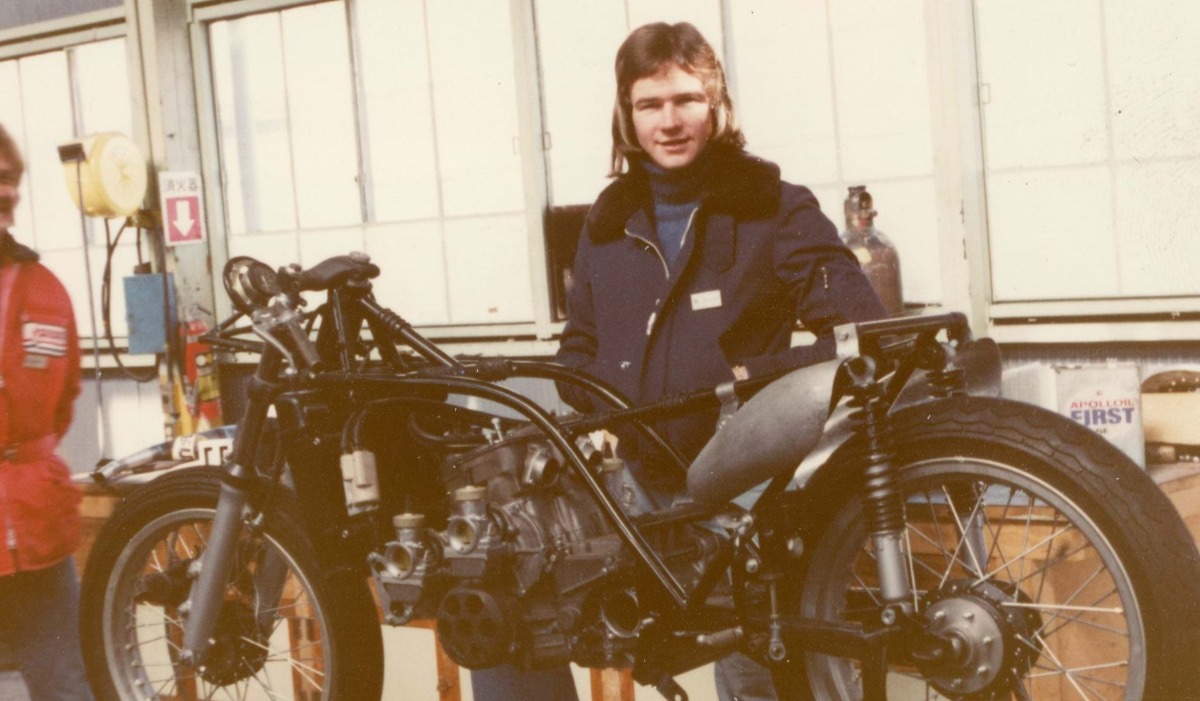
Success was quick to arrive for the RG500 and in its debut year Barry Sheene rode the XR14 to its, and Suzuki’s, first 500GP win at the Assen. Two years later he brought Suzuki its first 500GP world title, however for the RG’s development team, it was the constructor’s title that came alongside the rider’s title that meant the most.
“For Suzuki the most important thing was the constructor’s championship, not the rider’s one. If your rider wins you can only say the rider is a world champion, if you win the constructor’s championship you can say ‘Suzuki is world champion’. This drove Barry mad, he would get very upset because the privateer bikes were identical to the factory ones! For Suzuki it was excellent, we won seven constructor’s championships in a row,” laughs Makoto Suzuki.
With the RG500 Suzuki made a radical decision – they would release a privateer bike at a cost of £12,000 each that were identical in specification to the factory machines. With a grid full of RGs, the constructor’s title was all but assured.
“The only difference was the fact the factory bikes had titanium or magnesium fasteners where the production bike had steel or aluminium ones. The engine was 100% identical, we just changed the name from prototype to production. You could buy a production RG500 and win a GP, as Jack Middleburg did in 1981. That was the last time a privateer won a 500GP, however he rode an RG500 Mk VIII based on the XR22. You can imagine Barry Sheene’s frustrations.”
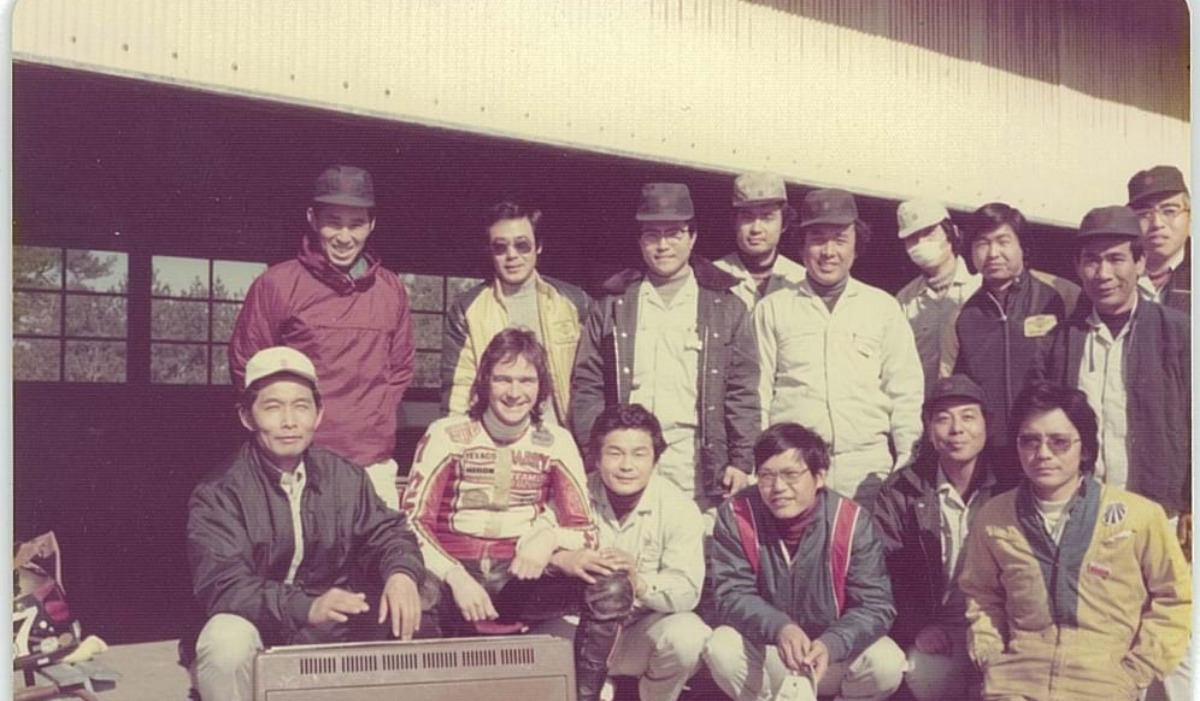
With the 1976 and 1977 titles in the bag thanks to Barry Sheene, 1978 saw Suzuki face tough competition, and upgraded the XR14 to the XR22 with its ‘step motor’. This engine used the first ‘cassette gearbox’ on a motorcycle, a feature that is common to most engine designs nowadays but was radical technology in 1978, designed following input from the McLaren F1 racing team. However, it was developed back in 1976, but it didn’t see the light of day until 1978.
“Barry won the 1976 title on the XR14 but we held the XR22 back in 1977 in case other manufacturers came out with something special,” explains Makoto Suzuki. “Yamaha in particular were a concern, but only unveiled exhaust valves and so we kept it hidden until 1978. Also, our customer RG500 was proving very popular and we didn’t want to detract from it, although we also needed to beat it as privateer riders were starting to challenge the factory ones.
“People had developed their XR14s so well they were incredibly fast and more than capable of matching the XR22. The power was not so different with the XR22 when compared to the XR14, they both made around 124bhp, however the engine was lighter which made the bikes handle better. Weight was a big factor in GPs in the 1970s and 1980s as despite there being a minimum weight of 100kg the bikes would never match this, the best we got was 108kg. With 124bhp and 108kg, the XR22 was quite a beast!”
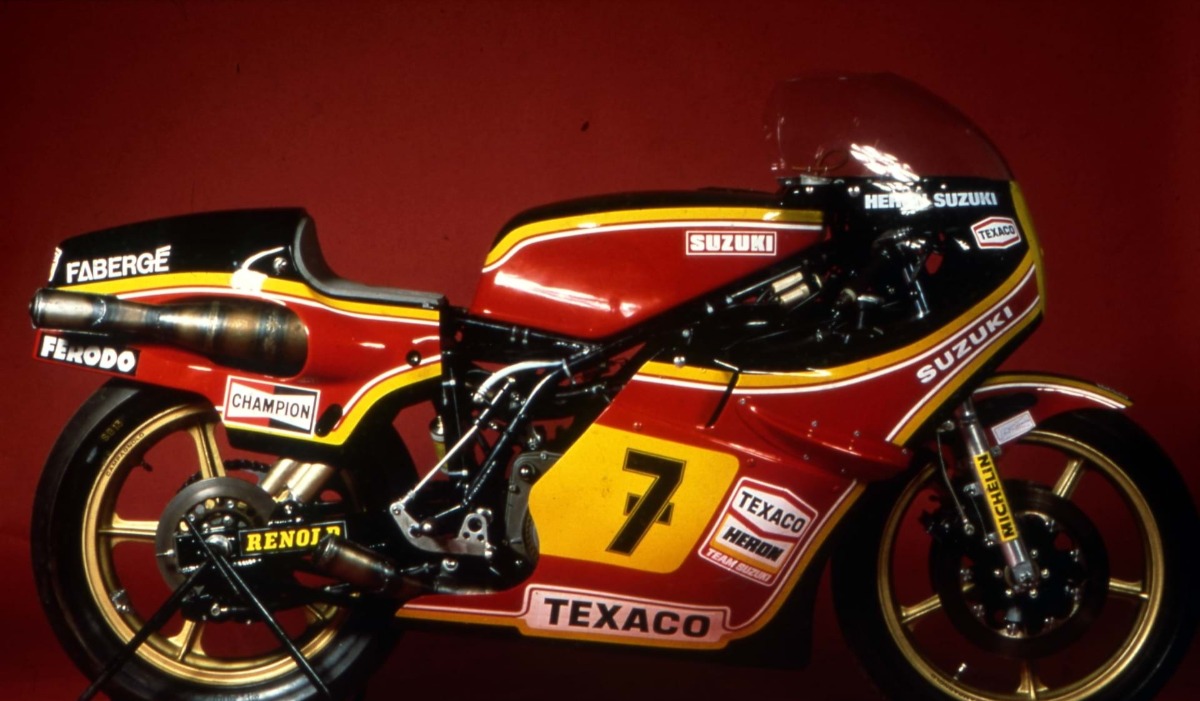
After developing the XR14 and subsequently the XR22, Makoto Suzuki was eventually able experience the power first hand.
“I rode the XR22 for half a lap in Japan and only once – that was enough for me. I pulled out of the pits and rode around a 200-degree corner and the rev counter wasn’t even registering as it started at 5,000rpm. On the straight I opened the throttle, the revs suddenly appeared, the bike wheelied and I pulled in. It was terrifying. I really appreciated the skill riders such as Barry Sheene had”
The square four design went on to dominate 500GP racing, taking two more world titles (1981 with Marco Lucchinelli and 1982 with Franco Uncini) and winning a total of 50 races alongside the seven consecutive constructor’s championships. But everything has to come to an end and in 1987 the square four RG500 was replaced by the V4 RGV500, something that was inevitable due to the fact the competition were all now using two-stroke motors.
“The square four had very good weight distribution and a lot of power. It is a simple engine but one that was reliable and worked very well, however it was limited in its power output, which is why it was replaced by the V4,” explains Makoto Suzuki. “The inlet port was limited in space, however on a V4 it is not. The more fuel and air you can get into an engine the more power you get out, which is why the introduction of the V4 boosted power from 133bhp to over 145bhp instantly.”
Suzuki GB recently restored Barry Sheene's world championship-winning XR14s to their former glory. Watch the two-part video documentary below.

DESIGNING THE SUZUKI' FATMILE'
The Bandit 1250-based 'FatMile' was designed using what the Japanese call Senpai-Kohei, where a young designer with new and fresh ideas is brought together to work with an experienced designer who will guide and direct them. For the FatMile designer Daniel Händler teamed up with legendary Suzuki designer Hans A. Muth, architect of the iconic Suzuki Katana.
The bike was initially built for the Glemseck 101 festival in Germany; one of the biggest café racer gatherings in Europe. Since then it has done the rounds at Intermot, EICMA and Motorcycle Live.
To stay true to the Senpai-Kohei design principle, Suzuki deliberately opted to buck the obvious trend of working with a big design studio or well-known customiser, instead putting its faith in Händler to steer the project with Muth overseeing the process.
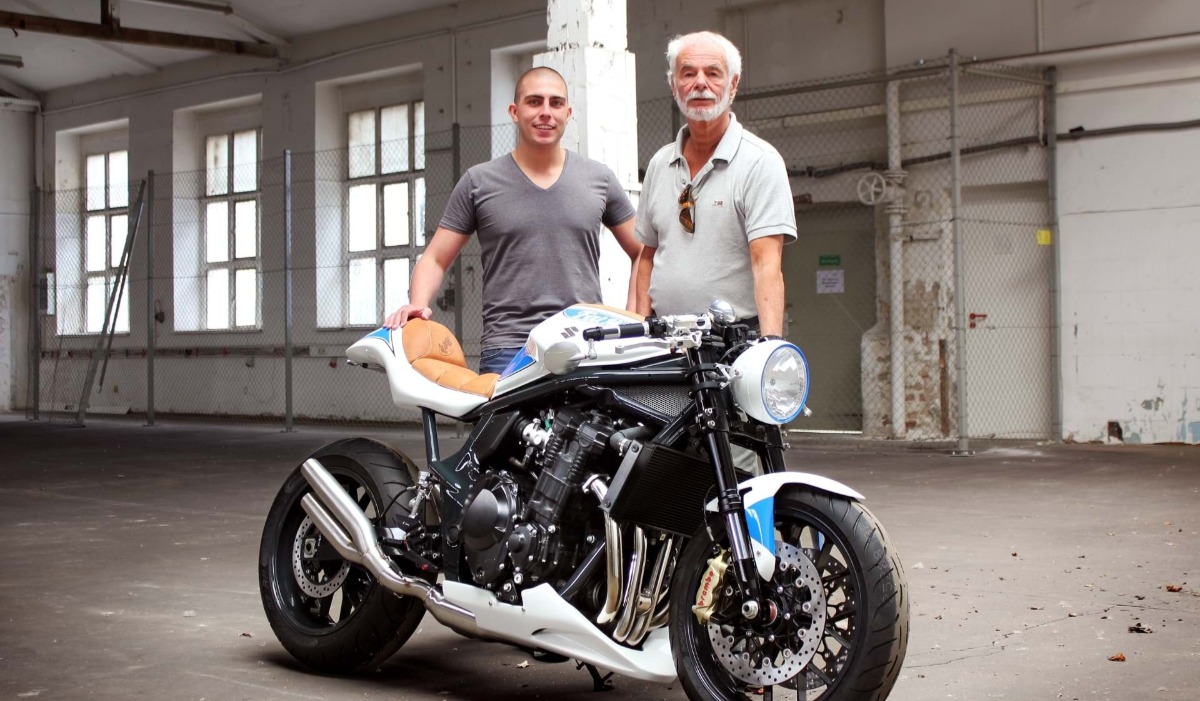
“Of course we took a certain risk with this decision,” admits Gerald Steinmann of Suzuki Europe. “When you hire an established design agency or world-famous custom builder hardly anyone will come out with criticism. But we consciously took this different approach and chose a solution in the Japanese tradition. Looking at the FatMile now I am convinced we did the right thing.”
A number of donor bikes were considered for the project, with the Bandit 1250 eventually becoming the starting point.
“We looked at a number of options,” Händler explains. “But, along with the GSX-R, the Bandit series is an iconic series for Suzuki, so this is why we chose it.”
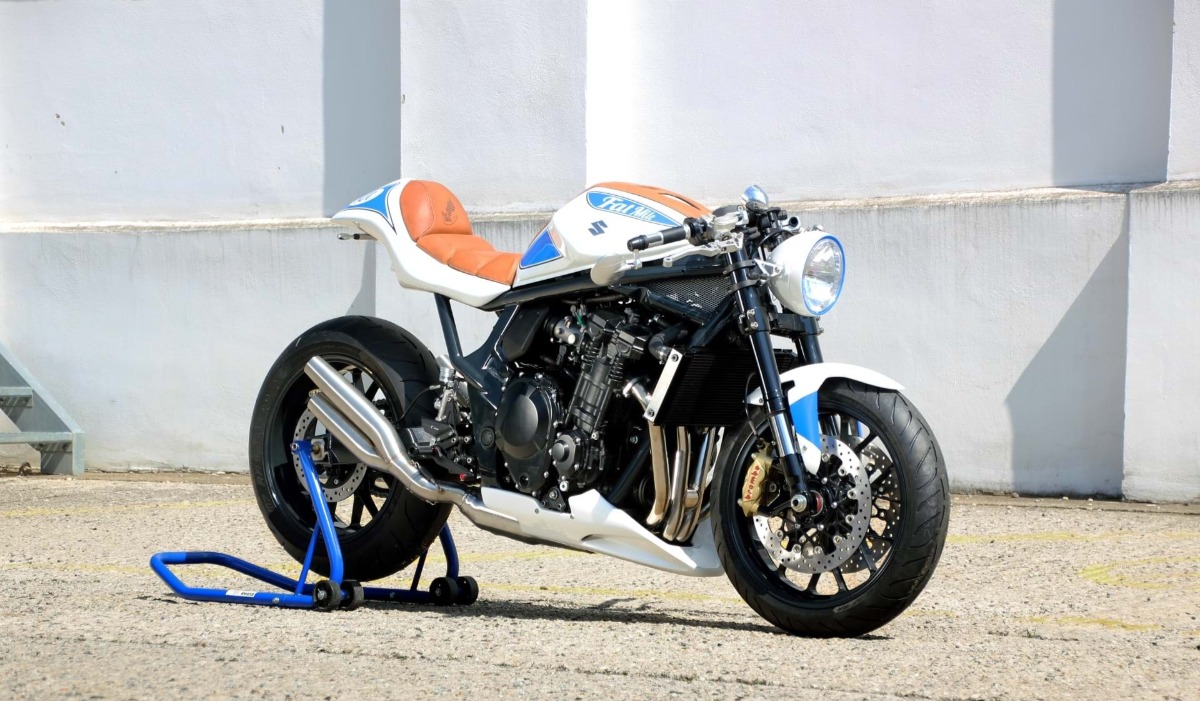
With Händler bringing the innovation and fresh approach, responsibility fell to Muth to guide him on his ideas, designs, concepts and finally implementation when it came to building the FatMile. Muth also had an eye on preserving the Suzuki design identity.
Händler continued, “In this project Mr. Muth was an extremely good tutor for me. At the beginning of our cooperation we shut ourselves away for three days to only talk and outline the FatMile project. That was enormously motivating and instructive for me.”
Muth added, “Mr. Händler is full of good thoughts and ideas. Sometimes I had to remind him to consider the limits of real implementation at early draft stages, but we worked in good harmony. I think that together we have created a very good machine.”
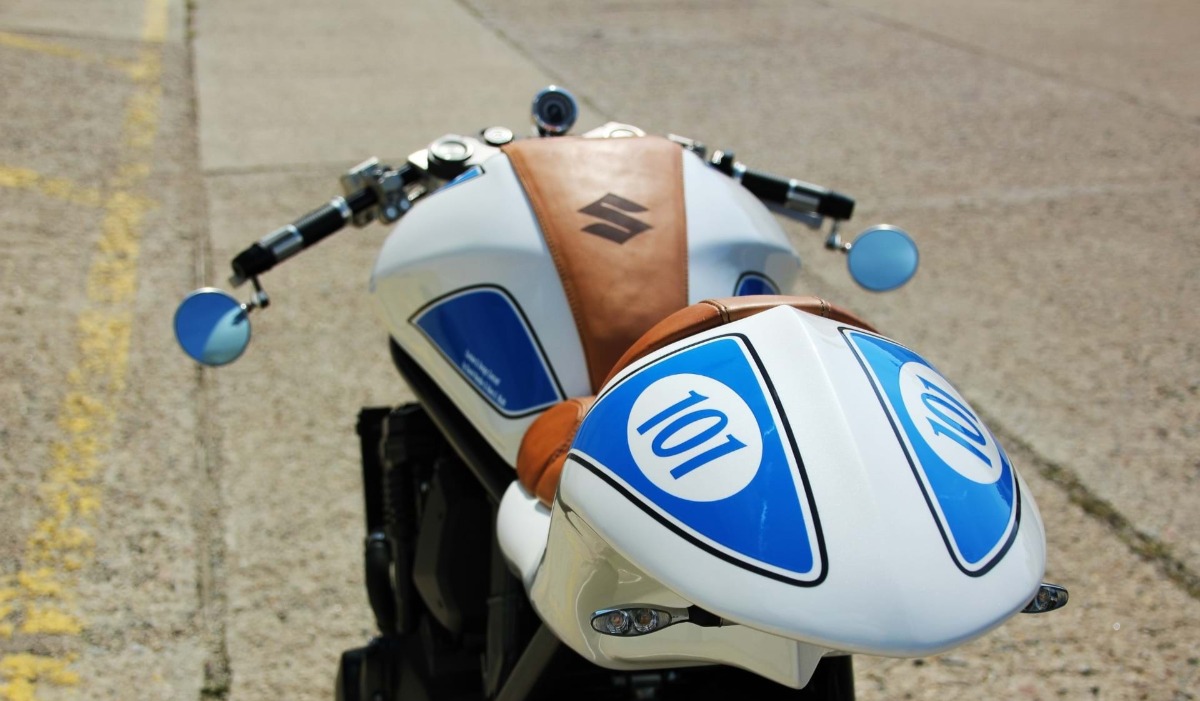
The Suzuki FatMile uses the 1255cc motor from the Bandit mated to custom Cobra Urban Killer exhausts. Swingarm is standard Bandit but the frame has a modified rear subframe and seat unit with a custom seat to go with the new Paaschburg & Wunderlich headlight, GFK front fender and custom paint scheme.
Front forks are 2012-2016 GSX-R1000 which, at 5cm shorter than Bandit forks lower the front end of the bike. Front brake calipers are Brembo monobloc from the same GSX-R1000 with GSX-R discs too. Rear stopping power comes from a four-pot Nissin caliper and B-King disc. The bike is fitted with Spiegler brake lines.
Tacho is a tiny Motogadget Motoscope and PVM wheels don Metzeler Sportec tyres. Rearsets are Rizoma RRC, handlebars are Rizoma Lux, and mirrors are Rizoma Spy-R 80.
Photography:Sven Wedemeyer

SUZUKI OFFERS SUMMER TEST RIDE INCENTIVE WITH £500 CUSTOMER SAVING
Suzuki has launched a new summer incentive, rewarding anyone that takes a test ride on selected models with £500 off the RRP when they go on to purchase. The offer runs in conjunction with all current campaigns, and across most of Suzuki’s on-road range.
Running from 1 August to 9 September, the incentive applies to both the GSX-R1000 and range-topping GSX-R1000R, the GSX-S1000F, GSX-S1000, and GSX-S750, both variants of the V-Strom 650 and V-Strom 1000, plus the SV650X and the new-for-2019 KATANA.
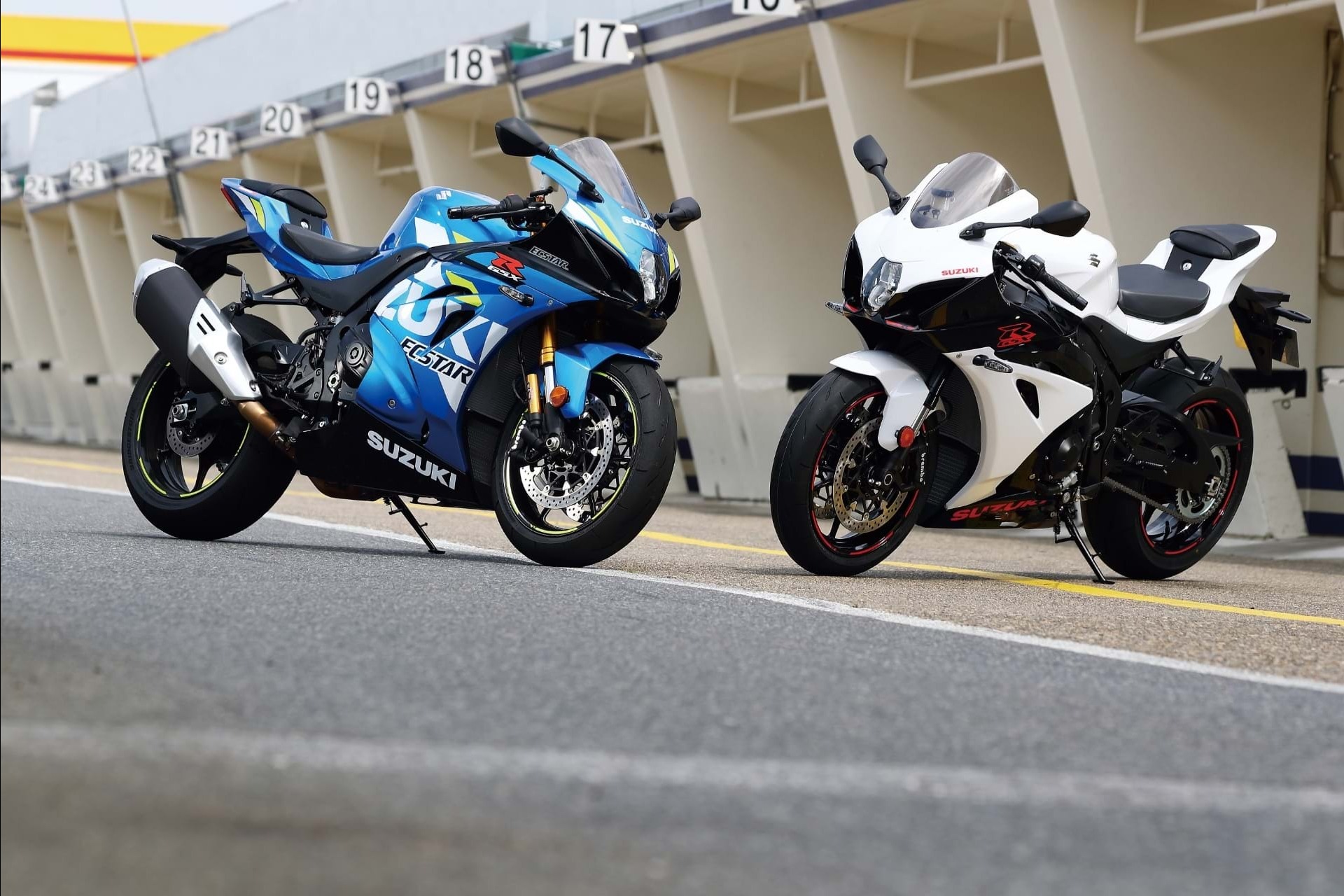
The offer also runs alongside the current HP and PCP promotions. This includes both the 0% APR finance offer on the GSX-R1000R, as well as Suzuki’s low rate finance campaign, which allows customers to choose from 2, 3 or 4 years with an APR to match.
Finally if choosing a V-Strom, customers will also benefit from £500 worth of free accessories, making Suzuki’s adventure range a truly tempting proposition.
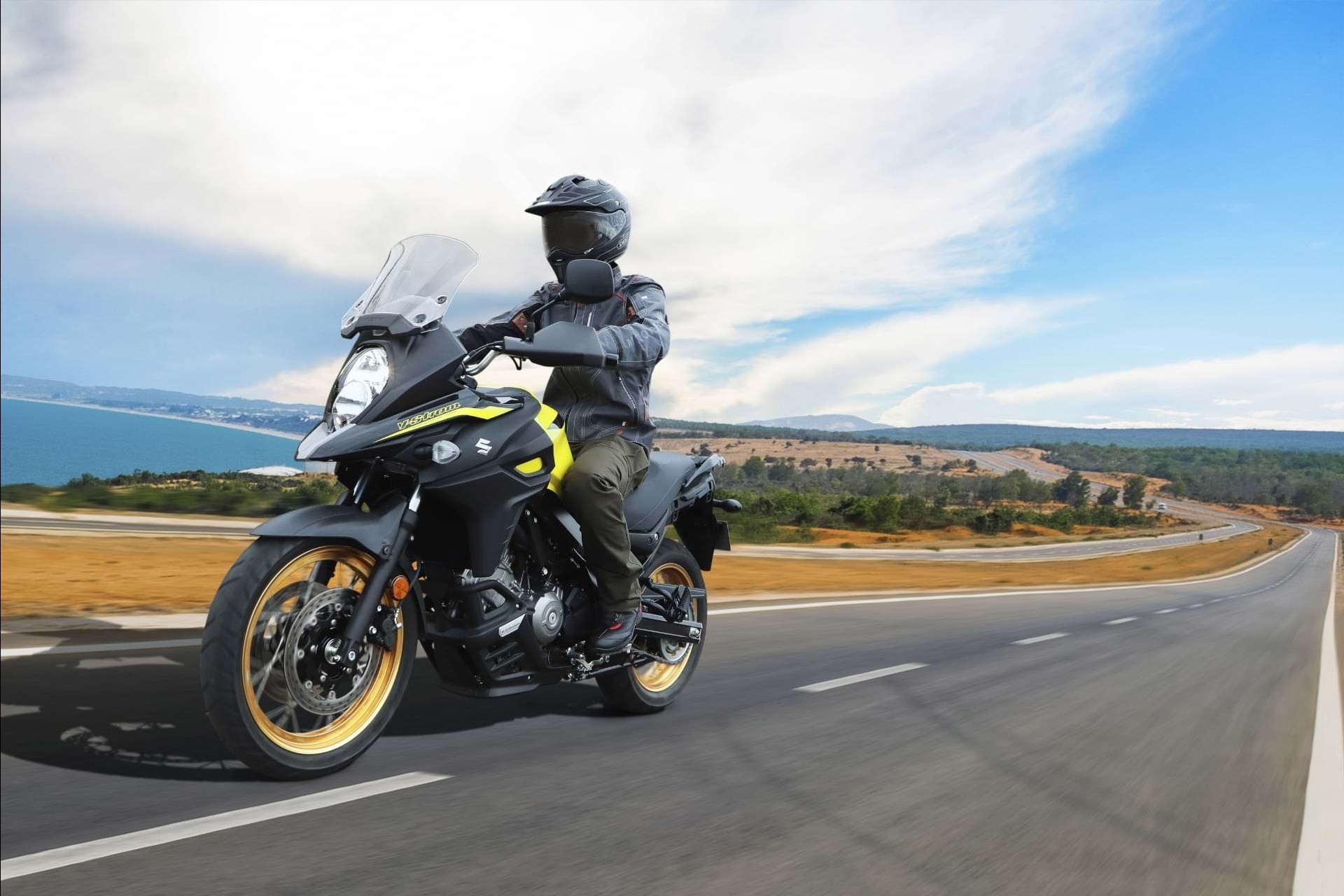
Suzuki GB head of motorcycles, Jonathan Martin, commented, “Summer’s in full swing, but for those still in the process of selecting a new bike for the season, this offer is an added sweetener alongside our current offers, that makes riding a new Suzuki this summer a tempting and viable option”
0% APR finance available on 2018 models of GSX-R1000R/RZ. Low rate finance available on GSX-S1000F, GSX-S1000, GSX-S750, Vstrom 650 & V-Strom 1000. Minimum Deposit £1,000. Credit is available to UK residents aged 18 and over, subject to status. Suzuki Finance is a trading style of Suzuki Financial Services Limited; St William House, Tresillian Terrace, Cardiff, CF10 5BH.
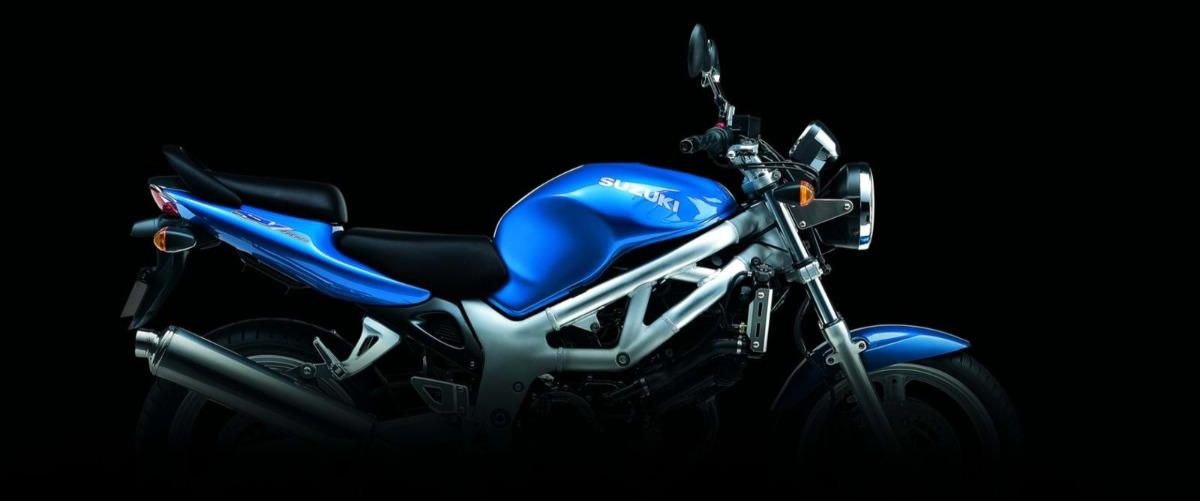
The story of the SV650
The SV650 was first introduced in 1999 as an affordable-but-fun middleweight, available either naked or half-faired. No one, not even Suzuki, could have imagined the cult appeal the bike would develop, as it appealed to everyone from commuters to riders looking for a capable tool for a weekend blast, and now fills race grids up and down the country. 20 years on, we take a look back at the history of one of the biggest overachievers in motorcycling.
The naked version of the SV650 cost just £3,999 when it was launched back in 1999, with the S model a mere £300 more. Both bikes immediately found favour with the motorcycling public, with a combined 2,549 sold in the first year and 2,939 the following year.
The SV was designed to be the answer to many people’s prayers; a robust, reliable, but characterful V-twin middleweight, suited to a range of riders and uses.
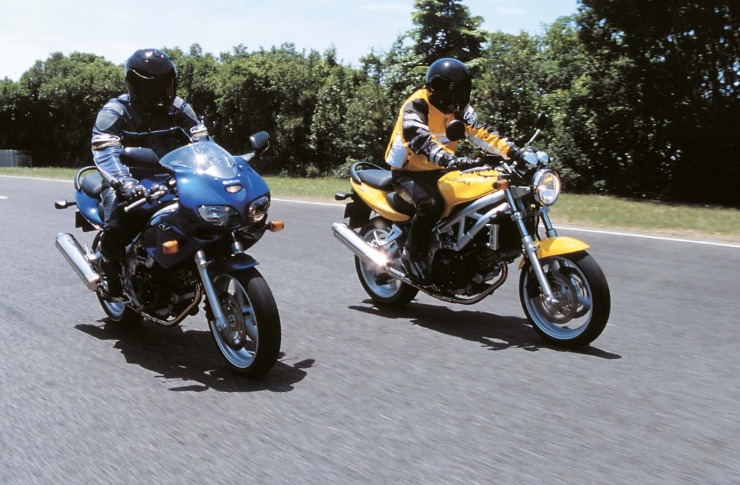
It was affordable and did everything it needed to. But it did it better than its rivals, with nimble, agile handling more akin to more expensive, sportier machines, and an engine that has gone down in motorcycle folklore. MCN referred to it as a ‘straightforward middleweight V-twin all-rounder which proves you don’t have to be boring to be practical’. It found a niche and it excelled.
It was comfortable as well, with a plush seat and easy-going ergonomics – especially the naked version. It could take a pillion too. And there was a great range of accessories, which meant the SV could be taken touring across the continent, or, with the fitment of fairing lowers, a pillion seat cowl, and a racy exhaust, become a mini V-twin weapon between the hedges.
Such a weapon in fact, that in club racing, the SV650 was the bike to be on when it came to the twin classes. As people sought more affordable ways of going racing, the SV filled Minitwin grids up and down the country, which boasted tighter regulations than other classes of racing. Frames couldn’t be modified, nothing could be done to the engine, and even things like the forks had to remain standard. However, the basic package from Hamamatsu was far greater than the sum of its parts, and the bikes posted impressive lap times around circuits like Donington Park, Brands Hatch, and Cadwell Park.
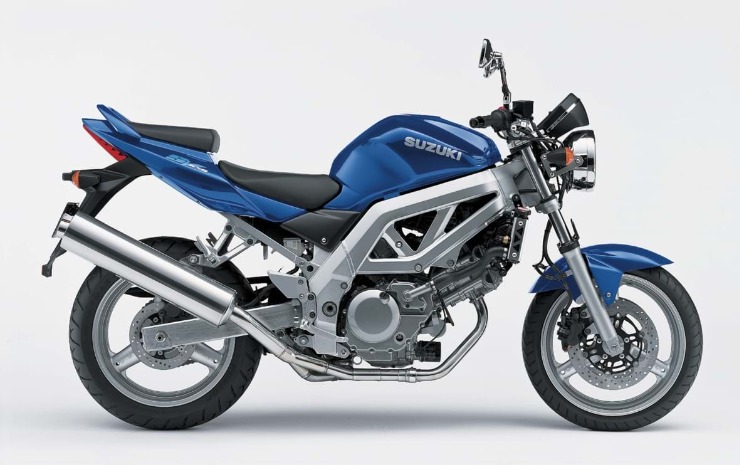
2003 saw the introduction of the second generation SV650. The new bike boasted an all-new cast aluminium frame, new swingarm and new exhaust. It also made the switch to fuel injection from carburettors. It got a power hike, too, taking peak power up to over 73bhp, while peak torque increased to 47.2lb-ft.
And it continued to fly out of the showrooms too. 2,266 were sold when the new bikes were introduced, as new riders, commuters, and racers alike sought them out.
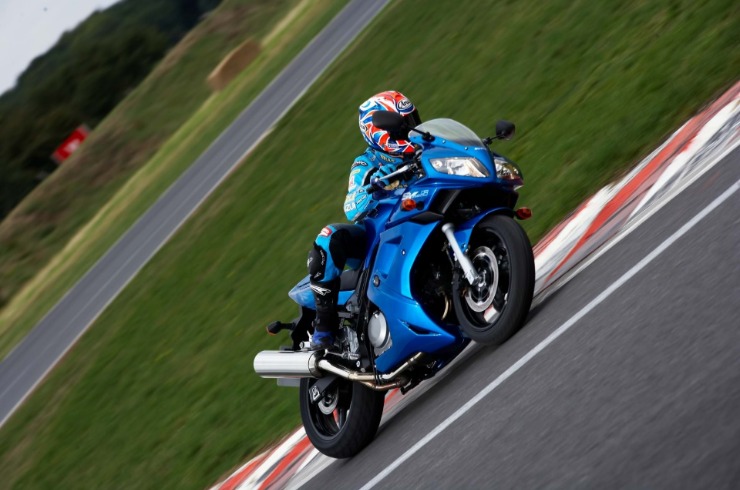
In 2007 new twin-plug heads were introduced to improve emissions, but it was the last update before the naked SV650 was superseded by the SFV650, which was launched in 2009.
The SFV650 was launched in Fuerteventura to widespread praise. MCN rated the upgraded engine five out of five, and commended the new bike, writing “the old SV650 was a good bike and to be honest Suzuki didn’t have to do much to make it a great bike once more. But they have gone one better and given us an excellent bike.”
Changes to the camshaft profiles and valve lift, a 10% increase in crankshaft inertia, newly staggered intake and exhaust tract lengths, and a new exhaust made it possible to boost low-rpm and midrange power, without sacrificing top-end output. There were also new valve springs, and while the bore and stroke remained the same from the older SV650, the bore was plated with Suzuki’s race-proven nickel-phosphorus-silicon-carbide coating. It also benefited from new iridium spark plugs.
The most striking difference was how the new bike differed visually from the SV. The classic styling made way for more modern lines, and a new steel trellis frame replaced the aluminium frame of the outgoing SV650.
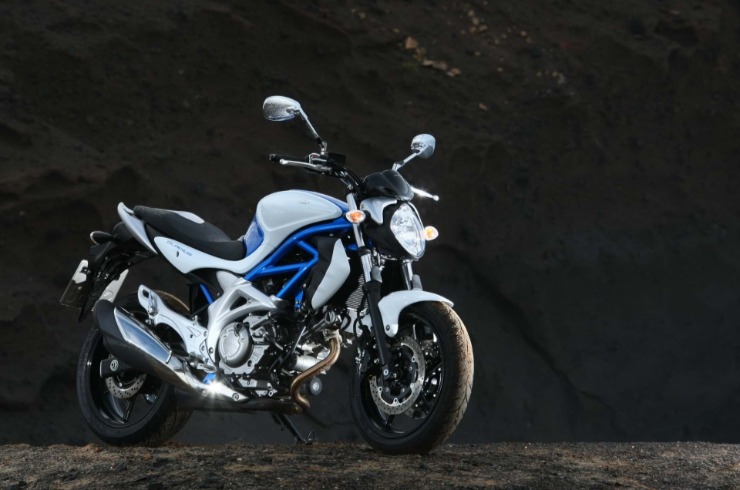
In classes where limited modifications were permitted, the SV650S continued its dominance of club racing grids, with it’s clip-ons and removable rear subframe. But in the more relaxed Supertwin classes, the SFV650 was carving a name for itself.
JHS Racing in particular were championing the way with the SFV, turning out an exquisite example dressed in GSX-R600 fairings, that turned heads when on display at Motorcycle Live.
The preparation put into the bike was essentially the same that goes into a superbike. The JHS SFVs used the original crankshaft, but got new con-rods, pistons, valves and valve springs. It retained the standard ECU, but with some parameters changed and some sensor eliminators, to extract every ounce of power. This bike didn’t have to do thousands of miles between services.
“The SFV650 boasts even more potential than the SV for racing,” James Holland from JHS Racing said at the time. “It’s the engine we like the most, as the nickel-phosphorus-silicon-carbide coating in the bores allows us to run higher tolerances with our pistons and rings.”
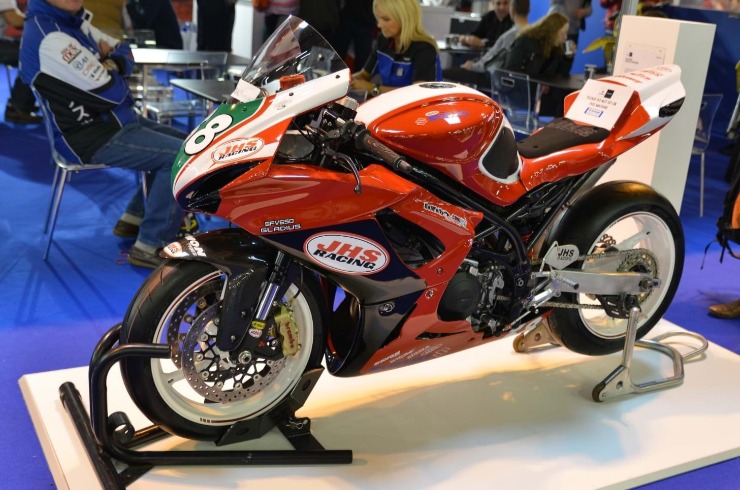
But for 2016 the naked SV returned to the range, doing everything it did in 1999, only better. It’s more powerful and lighter than the SFV650, with clean, classic styling to appeal to a variety of riders. It boasts some more tech too, with a one-push, easy-start system and Suzuki’s low-rpm assist function that makes it incredibly difficult to stall the bike when pulling away. On its launch in northern Spain it was praised for its handling, with Bike Social writing, “The Suzuki’s chassis is mint. It turns well, holds a line, and leans over till the long hero blobs and exhaust are dragging if you want.”

Two years later and the SV650X joined the lineup alongside the standard SV, while the S made way. It offered something new for SV customers, sporting café racer-inspired styling with a bikini fairing, dropped bars, and ribbed seat, plus a retro-style livery.
The SV650 remains a model that does far more than it should, better than it should. When the first SV650 rolled off the production line in the late 90s, no one would have believed that it would find favour with so many riders looking for so many different things, and go on to fill club racing grids and tackle the Isle of Man TT. It really is one of motorcycling’s biggest overachievers.
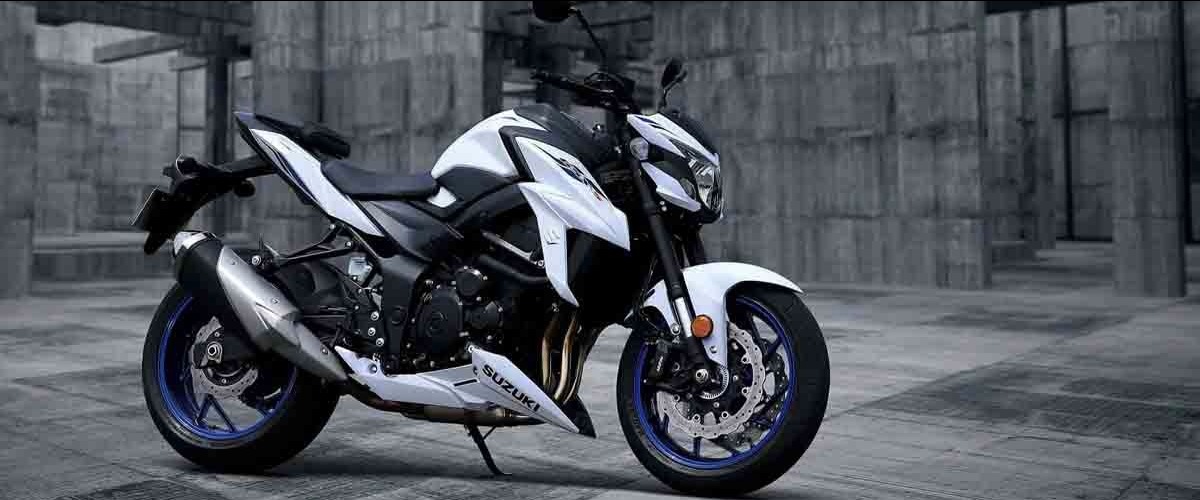
SUZUKI ANNOUNCES ITS SUMMER LOW-RATE FINANCE OFFER
Suzuki has announced the details of its summer low rate finance offer, which gives customers the ability to tailor a finance package to their individual needs by choosing from either a Personal Contract Purchase (PCP) or Hire Purchase (HP) agreement, and the term of their choice – from two, three, and four years – with an APR to match.
The offer is available on all V-Strom 650 and V-Strom 1000 models, plus the GSX-S1000F, GSX-S1000, and GSX-S750 street machines, with a minimum deposit of £1,000. With a minimum deposit of £500 customers can also take advantage of the offer on the GSX-S125 and Address scooter.
Address HP Only. Credit is available to UK residents aged 18 and over, subject to status. Suzuki Finance is a trading style of Suzuki Financial Services Limited; St William House, Tresillian Terrace, Cardiff, CF10 5BH.
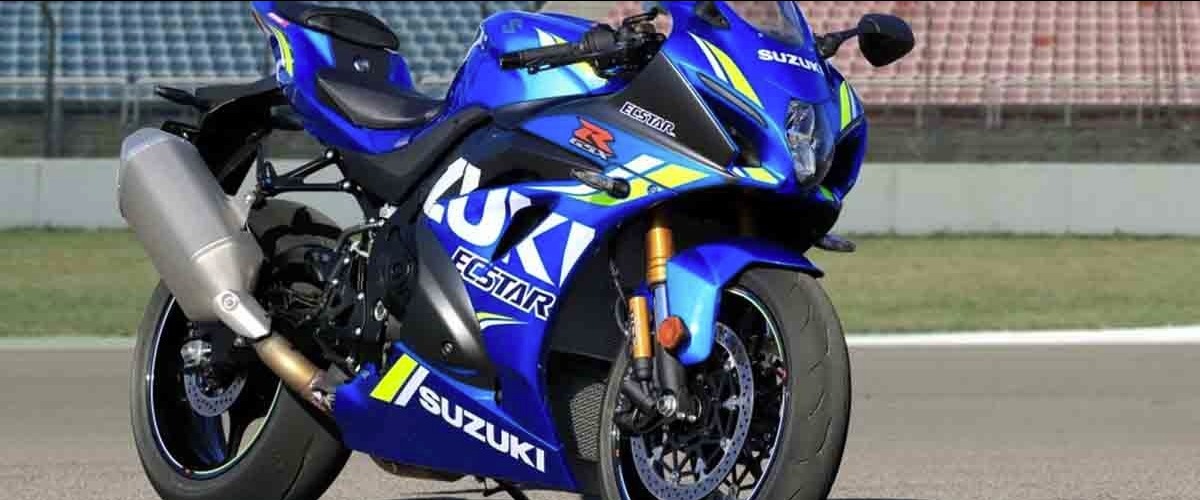
SUZUKI ENHANCES GSX-R 0%REPRESENTATIVE FINANCE OFFER
Suzuki has announced an enhanced 0% APR Representative finance offer on the award-winning and race-proven GSX-R1000R plus the entry-level GSX-R125, available until the end of September 2019. There’s also a new £250 Suzuki deposit contribution on the GSX-R125.
Available with a minimum deposit of £1,000 on the range-topping GSX-R1000R, customers can ensure they’re choosing a deal that best suits their personal circumstances, and opt for either a Personal Contract Purchase (PCP) or Hire Purchase (HP) agreement.
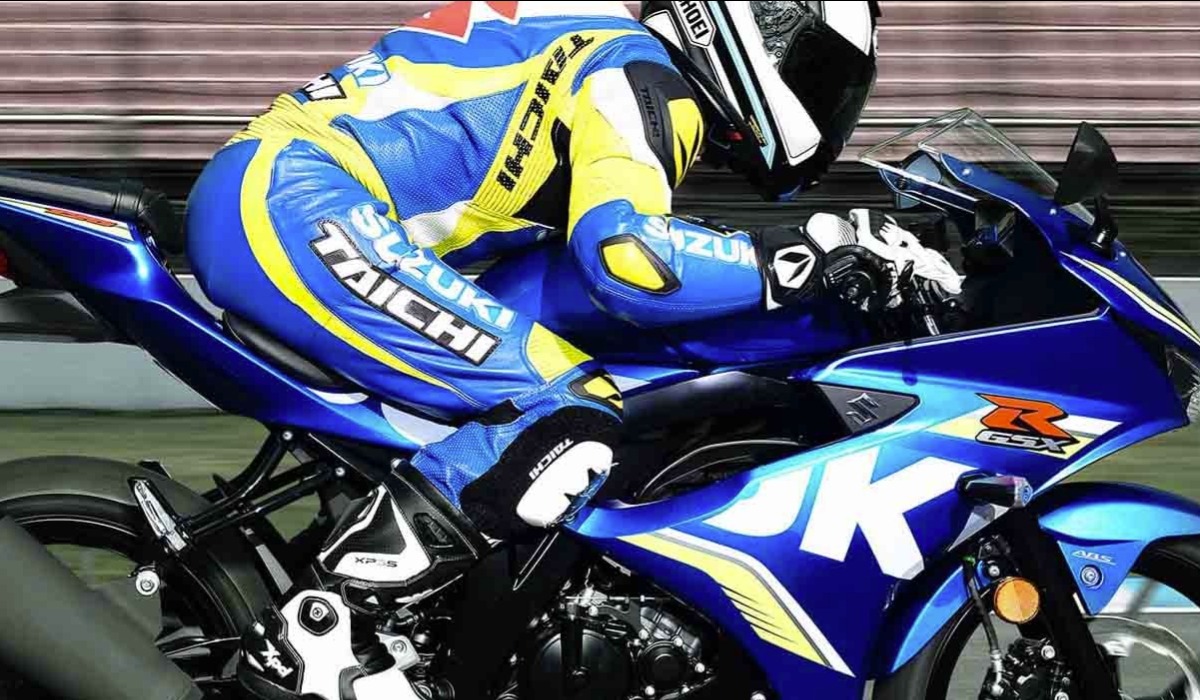
Suzuki’s 0% APR Representative offer also extends to the learner-friendly GSX-R125, which is available with a minimum deposit of £750, £250 of which comes as a Suzuki deposit contribution, meaning buyers need only £500 deposit.
The GSX-R1000R uses a host of MotoGP-derived technology, from a clever variable valve timing system that allows it to produce both low-down and midrange torque and impressive top-end power, to a comprehensive suite of performance-boosting electronics that includes an IMU-governed, 10-mode traction control system, launch control, quickshifter and auto-blipper, and cornering ABS.
The GSX-R125 set new benchmarks when it was launched in 2017, coming into the 125 sports bike market with the best power-to-weight ratio. It boasts an LCD dash, LED lighting, keyless ignition, and Suzuki’s easy-start system.
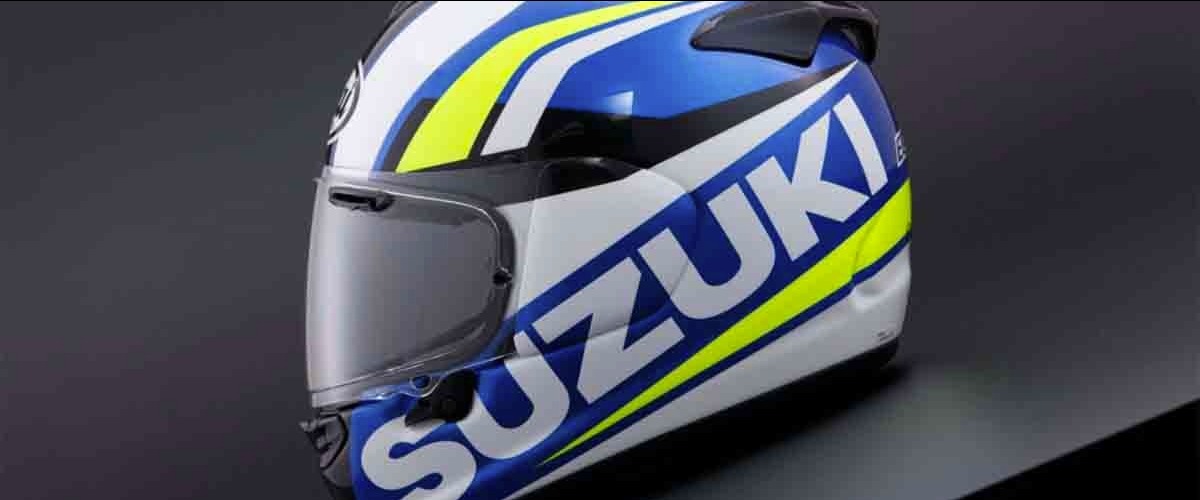
SUZUKI MOTOGP-INSPIREDARAI CHASER-X AVAILABLE
Suzuki and Arai have joined forces to create a Team Suzuki Ecstar, MotoGP-inspired Chaser-X limited edition helmet, which comes with an RRP of £550 and is available now through authorised Suzuki dealerships or online.
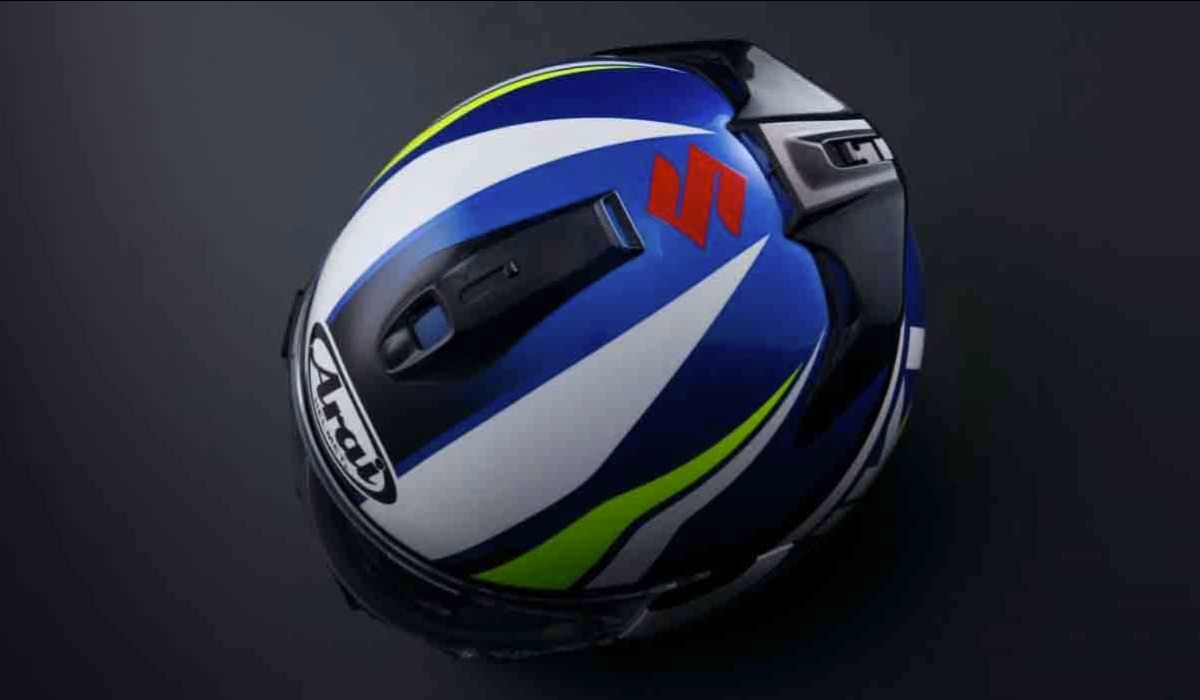
The helmet gets a striking blue, white, and yellow design with bold Suzuki lettering, reminiscent of the firm’s GSX-RR MotoGP racer, and is ACU Gold Standard certified. It also uses a double d-ring chin strap fastener, Arai’s new shield latch system, and includes liner speaker pockets.
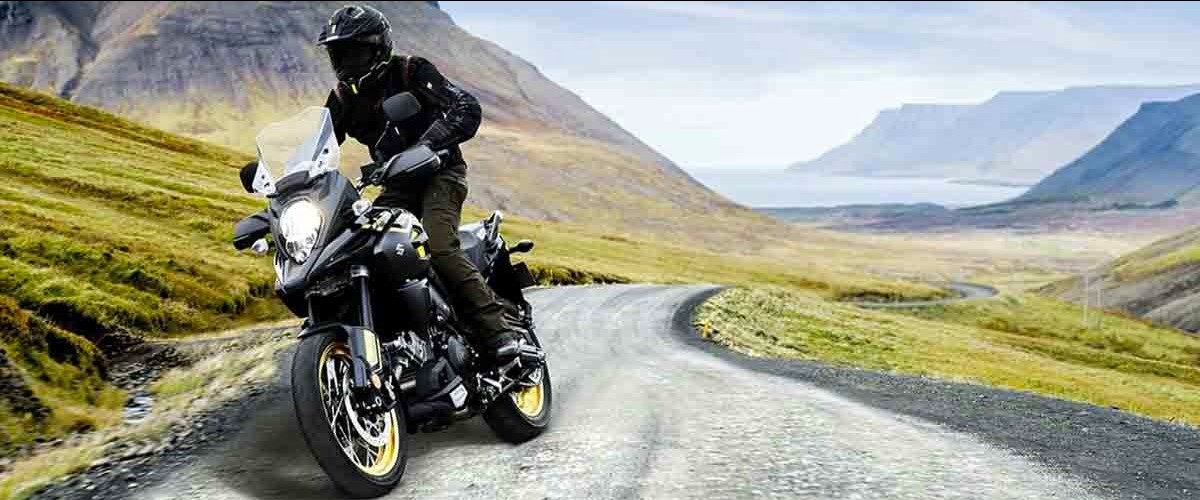
SUZUKI SET FOR INAUGURAL ADVENTURE BIKE RIDER FESTIVAL
Suzuki will showcase its adventure and off-road ranges at the inaugural Adventure Bike Rider Festival, which takes place from 12-14 July at the Ragley Hall Estate in Warwickshire, with visitors also able to enjoy test rides on many of the models on display.
The range-topping V-Strom 1000XT – which features a 1037cc V-twin engine packed with low-down torque and a broad midrange, plus a two-mode traction control system and intelligent cornering ABS – will be displayed alongside the standard V-Strom 1000. The cult-favourite V-Strom 650 will also be on display, side-by-side with the more off-road-focussed V-Strom 650XT, which swaps cast wheels for lightweight spoked options, and gets hand guards and lower cowling as standard. Both models use Suzuki’s characterful and famed 645cc V-twin engine, and get traction control and low RPM assist.

Demonstrating the V-Strom’s adventure-potential is the Bike to Japan V-Strom 1000, which was ridden from the UK all the way back to the Suzuki factory in Hamamatsu, Japan in 2014.
Proving big adventures can come in small packages is the V-Strom 250. The A2 licence-friendly machine uses a flexible parallel twin engine, and includes full luggage among its range of accessories, and will be on display along with its larger capacity siblings.
Further highlighting the Japanese brand’s off-road prowess is the RM-Z450 motocross machine and KingQuad 750 ATV, both of which will be present on the Suzuki stand, while the head-turning new KATANA will nod to the firm’s street bike range.

Visitors to the festival can also sample the entire V-Strom range for themselves, with test rides available over the course of the event. The KATANA – an evolution of the iconic 1981 machine that uses a 150hp version of the legendary GSX-R1000 K5 engine, housed in a lightweight aluminium chassis and tamed with a three-mode traction control system – will also be available for demo rides.
For more information on Suzuki’s adventure range, click here. To find out more about the new KATANA, click here.
The Toughest Choice
Just announced, we are offering £1,000 off the rrp of both the Ninja 125 and Z125.
The Ninja 125 is not simply the first step on the Ninja road, it also displays the Kawasaki trademark engineering quality from the Ninja H2 trellis style frame to the sleek Kawasaki Racing Team inspired bodywork. Features include 15 PS, unmistakably Ninja supersport inspired styling, supersport ergonomics, lightweight trellis frame, independent sport ABS, petal disc brakes, all-digital instrumentation.
NINJA 125 NOW £3,499 otr
Riders seeking the purest thrills have relied on Z for over four decades. Z is agility plus potency – perfectly balanced. So you get the ultimate power feeling and impeccable handling that can only be Kawasaki. The Z125 is built for you. For the refined raw feeling you won't find anywhere else. Features include water-cooled, single cylinder engine, 15PS, aggressive and unique Sugomi inspired styling, lightweight trellis frame, independent sport ABS, petal disc brakes, all-digital instrumentation.
Z125 NOW £3,199 otr
THE EVOLUTION OF AN ICON
Join us on Thursday 30 May 2019 from 5:30 pm until 7:30 pm for the national launch of the all new Suzuki Katana. RRP £11,399 otr
There will be few surprises on the night, along with our famous free raffle.
Forged to perfection and polished to a magnificent radiance. Engineered to provide maximum control and optimum performance. Finely crafted to take riding pleasure to a new level. The Suzuki KATANA is destined to create a new legend.
Japanese swordsmiths devote countless hours to repeatedly forge, hammer, fold the raw steel to achieve the right balance needed for the blade to perform optimally. Fired by the same spirit, Suzuki’s development team tested and tuned each component to create a compact, lightweight chassis that is engineered to provide agility, ease of control and a fun-to-ride character.
GREAT ROAD HANDLING PERFORMANCE
The twin-spar aluminium alloy frame is engineered to provide nimble handling and great road holding performance. The frame’s main tubes are designed to run straight from the steering head to the swingarm pivot. This is ideal for achieving both high rigidity and low weight. Designed using the latest FEM analysis technology, the frame weighs about the same as the current GSX-R1000.
COMFORTABLE SEAT AND SLIM BODYWORK
The sleek two-tone seat is comfortable, and the seat strap provides the passenger with a good grip. The seat height of 825mm provides comfort and allows riders to plant their feet on the ground when stopped. The slim design where the seat meets the fuel tank also helps make it easy for the rider’s feet to reach the ground.
FULLY ADJUSTABLE FORKS
The Ø43mm KYB inverted front forks provide 120mm of stroke for a sporty yet plush ride. The forks feature fully adjustable damping, rebound, compression and spring pre-load. The 63mm stroke of the link-type rear suspension is tuned for a superb progressive feel and to react efficiently to road surface conditions, delivering an agile and stable feel. The rear suspension offers adjustable rebound damping and spring pre-load.
BREMBO RADIAL BRAKES
Brembo radial mount monobloc front brake calipers are mated with Ø310mm floating-mount dual discs to provide powerful braking performance. Each caliper has four opposing Ø32mm pistons. The front brake calipers are same type used on the current GSX-R1000. The Antilock Brake System monitors wheel speed 50 times per wheel rotation, and matches stopping power to available traction. The ABS control unit, produced by BOSCH is compact and light weight.

APRILIA TUONO 660 FACTORY
23 November 2021, Milan, Italy – Descending directly from the Tuono V4 Factory, and inheriting its key values, the new Tuono 660 Factory boasts considerable equipment and performance. At 181kg and 100 HP, the Tuono 660 Factory is lighter, more powerful and sophisticated, and flaunts first-rate equipment.
The Factory versions of Aprilia sports bikes have always been flagship products, dedicated to the most demanding and skilled riders, who can appreciate the quality of the most sophisticated outfitting. Now, the Factory trim is also available for the Tuono 660, which makes for a Tuono with unparalleled dynamic qualities, the most efficient and fun to use on the road and a true generator of emotions, accessible to everyone. All this, while respecting the Aprilia 660 project that promises bikes with a sensational weight/power ratio that are lightweight, high-performance, and built around the brand-new latest generation Aprilia parallel twin.
With respect to Tuono 660, already widely recognised and appreciated by the public and critics for its outstanding chassis qualities, Tuono 660 Factory boasts a more sophisticated suspension, better suited to sports riding. The Kayaba fork with 41 mm stanchions is fully adjustable in its compression and rebound damping and spring pre-load, while the Sachs shock with a separate reservoir is also adjustable in its compression and rebound damping and spring pre-load.
There is an even better weight/power ratio, one of the main goals for all new Aprilia 660 models and already outstanding on the Tuono 660, thanks to the adoption of a light lithium battery that contributes to reducing the overall weight by roughly 2 kg (the kerb weight is now 181 kg) and also better engine performance.
A compact and lightweight latest-generation engine, the 660 cc forward-facing twin with DOHC timing and four valves per cylinder is the result of experience gained with the very powerful engine that equips RSV4, from which the construction philosophy and basic concepts derive. The engine has a load-bearing function and houses the aluminium swingarm in its rear section. Combustion is asymmetric and offset by 270° to obtain irregular combustion which translates into performance and sound similar to that of a V-twin. The maximum power is upped from 95 HP with the Tuono 660 to 100 HP with the Tuono 660 Factory. The engine boasts even more drive in acceleration, thanks to the use of a shorter final drive, with a 16-tooth pinion gear, one less than Tuono 660. The maximum torque remains unchanged, with 67 Nm at 8500 rpm, 80% of which is available from 4000 rpm, or 90% on reaching 6250 rpm.
Tuono 660 Factory offers a full suite of APRC electronic controls with a Ride-by-Wire electronic accelerator and six-axis inertial platform as standard. The latter, thanks to the accelerometers and gyroscopes it contains, is able to recognise the bike's condition with respect to the road, recording and processing the inputs that result from riding and sending the data to a control unit that intervenes to optimise the control parameters. The Tuono 660 Factory APRC includes ATC (Aprilia Traction Control), adjustable traction control characterised by high-performance intervention strategies; AWC (Aprilia Wheelie Control), the adjustable wheelie control system; ACC (Aprilia Cruise Control) to maintain a steady speed without using the throttle; AQS (Aprilia Quick Shift), the electronic gearbox that allows for very rapid shifting without closing the throttle or using the clutch. It is also equipped with the downshift function, to allow for clutchless downshifting; AEB (Aprilia Engine Brake), the adjustable system to control engine braking when closing the throttle; AEM (Aprilia Engine Map), with different mappings via which to alter the engine's character and delivery.
Tuono 660 Factory also benefits from multi-map Cornering ABS. With its extremely contained weight and dimensions, the system is able to optimise braking and ABS intervention through the corners, thanks to a specific algorithm that constantly monitors various parameters such as lateral acceleration, the pressure applied to the front brake lever, and the lean, pitch and yaw angle, modulating the braking action in order to optimise the ratio between deceleration and stability.
As with the Tuono 660, there are five customisable Riding Modes (three for road use and two for track use) to simplify life on-board. The rider needs only to choose the Riding Mode that best interprets his or her riding needs in order to automatically obtain the best settings in terms of traction control, wheelie control, engine brake, ABS and the other managed parameters. Adoption of the inertial platform has also allowed for activation of the “bending lights” function, incorporated into the front LED light cluster complete with perimeter DRL (this pair of additional lights illuminate the entire corner, increasing visibility when leaning).
With its reduced surfaces effectively highlighting a dynamic, sports character, the bike's design stands out for the innovative double fairing that serves as an aerodynamic appendage. The pressure of the air channelled between the two walls contributes to optimising stability at high speeds and, at the same time, increases rider comfort by protecting against direct air flow, also deflecting the hot air extracted from the engine. The Tuono 660 Factory version is further enhanced with the aggressive and sporty Factory Dark graphics and the presence of the single-seat tail fairing , painted in black and red and supplied as standard together with the passenger seat and footpegs. These pegs, like those of the rider, are the same as those of the Aprilia RS 660 but lighter.
Aprilia Tuono 660 Factory – Technical Data
|
Engine type |
Aprilia forward-facing parallel twin-cylinder, four stroke, liquid-cooled with radiator and water-oil heat exchanger, DOHC with silent chain on the right side, four valves per cylinder. |
|
Bore and stroke |
81 x 63.93 mm |
|
Engine capacity |
659 cc |
|
Compression ratio |
13.5:1 |
|
Maximum power at crankshaft |
100 HP (73.5 kW) at 10,500 rpm |
|
Maximum torque at crankshaft |
67 Nm (6.83 kgm) at 8500 rpm |
|
Fuel system |
Airbox with front air vent. Two Ø48 mm throttle bodies, Ride-by-wire management |
|
Ignition |
Electrical |
|
Lubrication |
Wet sump |
|
Transmission |
Six gears with Aprilia Quick Shift (AQS) up and down system |
|
Clutch |
Multiplate wet clutch with slipper system |
|
Secondary drive |
Chain, drive ratio 16/43 |
|
Electronic management |
6-axis IMU, APRC suite that includes ATC (traction control), AWC (wheelie control), AEB (engine brake) AEM (engine mapping), ACC (cruise control) 5 riding modes (Road and Track, 3 pre-set and 2 customisable) |
|
Chassis
|
Aluminium dual beam chassis with removable seat-supporting subframe |
|
Front suspension
|
KayabaØ 41 mm upside down fork with top out spring, aluminium pins to fasten radial callipers. Both stanchions allow for rebound, compression and spring pre-load adjustment. Wheel travel: 110 mm |
|
Rear suspension
|
Asymmetric aluminium swingarm. Single shock with top out spring and separate reservoir, adjustable in rebound, compression and spring pre-load. Wheel travel: 130 mm |
|
Front brake
Rear brake
ABS |
320 mm double disc Brembo radial callipers with fourØ horizontally opposed 32 mm pistons. Radial pump and metal braided brake hose |
|
220 mm diameter disc; Brembo calliper with twoØ 34 mm separate pistons. Master cylinder with separate reservoir and metal braided hose
Multi-map Cornering ABS |
|
|
Wheels |
Aluminium alloy, front: 3.5” x 17” rear: 5.5” x 17” |
|
Tyres |
Radial tubeless, front: 120/70 ZR 17 rear: 180/55 ZR 17 (alternatively 180/60 ZR17) |
|
Dimensions
|
Wheelbase: 1370 mm Length: 1995 mm Width: 805 mm Saddle height: 820 mm Headstock angle: 24.1° Trail: 104.7 mm
|
|
Weight |
181 kg kerb weight (169 kg dry weight) |
|
Emissions compliance
Consumption |
Euro 5
4.9 litres/100 km |
|
CO2 emissions |
116 g/km |
|
Fuel tank capacity
Colour range |
15 litres (including 4-litre reserve)
Factory Dark |
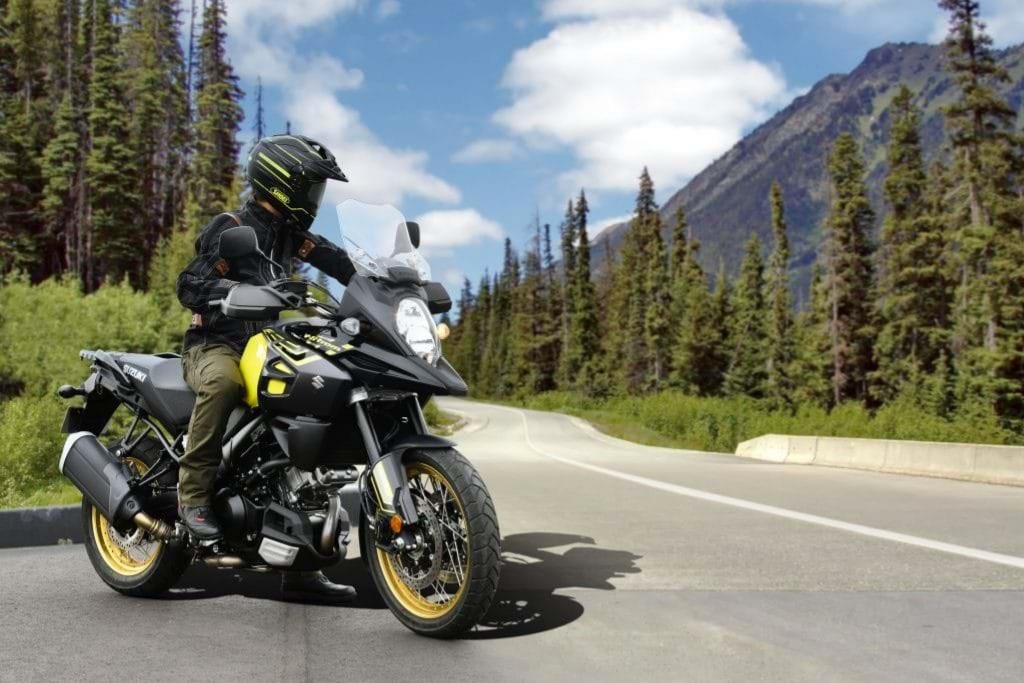
SUZUKI REVAMPS SPRING OFFER
Suzuki’s widely-regarded finance offer – which gives customers the ability to choose either a two, three, or four year agreement with an APR to match, plus the option of deciding between a PCP or Hire Purchase deal – will continue this spring, with new models now included in the campaign. Both the V-Strom 650 and V-Strom 1000, plus the XT and GT variants of both models, are now available as part of the offer. The award-winning V-Strom 650 uses Suzuki’s famed 645cc V-twin engine and features a two-stage traction control system (which can be turned off), plus easy-start and low rpm assist. Meanwhile the range-topping V-Strom 1000X GT comes fully-equipped with aluminium top box and panniers, plus tapered handlebar and lightweight spoke wheels.
The SV650X – the café racer-inspired version of the equally-popular SV650 – is now part of the offer, along with the GSX-S1000 and GSX-S1000F, GSX-S750 and learner-friendly GSX-S125, plus the Address scooter.
All new models from Suzuki come with a three-year warranty and one-year Suzuki Roadside Assistance. Each is also equipped with Datatag’s MASTER security system for added peace of mind.
For information on all of Suzuki’s offers, click here.
Minimum deposit £300. Address Hire Purchase finance only. Credit is available to UK residents aged 18 and over, subject to status. Suzuki Financial Services Limited, St William House, Tresillian Terrace, Cardiff, CF10 5BH.
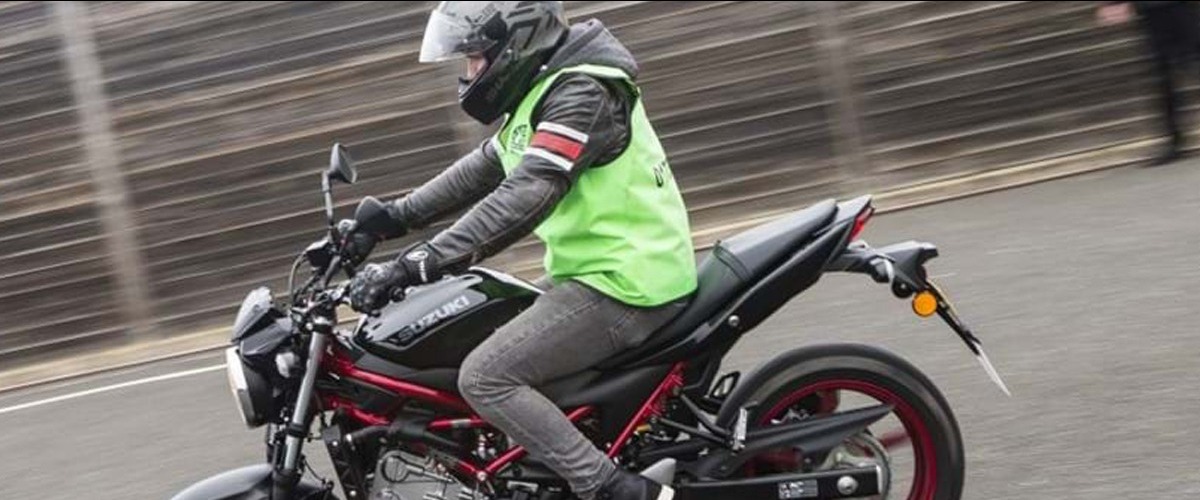
TEAM GB BMX STAR DECLAN BROOKS PASSES MOTORCYCLE TEST
Team GB athlete, freestyle BMX star, and Olympic hopeful Declan Brooks has swapped pedal power for horsepower, passing his motorcycle test using Suzuki’s SV650.
Brooks – who finished third in the FISE Chengdu BMX World Cup event in China last November – passed his CBT last year, as he took the first steps into gaining his motorcycle licence. Now, with nearly a year’s worth of experience under his belt, the 21-year-old has passed both his module one and module two assessments, thanks to Shires Motorcycle Training, and can finally remove the L-plates as spring arrives.
Declan Brooks, “I’m used to feeling nervous ahead of world championship competition, but it didn’t stop the apprehension for each part of the test, so it was a huge relief to be told I’d passed. I really enjoyed learning, doing my CBT, and getting some miles in on the GSX-S125 last year, but I was keen to keep going and go through my full test. I definitely enjoyed having more power on tap and a bigger bike with the SV, too. This has come at the perfect time as well; it’ll not be long until the clocks change and the weather warms up, and I’m now excited to get on the road and plan some rides this coming summer.”
Brooks is currently competing in world championship around the globe, with the aim of representing Team GB at the Tokyo 2020 Olympics, the first time freestyle BMX will be included in the games. He is also from a motorcycling family and background, his father racing before Declan got his first taste of a motocross bike at four.
He added, “I think having a bicycle and two-wheeled background definitely helped. Even though there are obviously massive differences, you’ve got a feel for balance, how to use your weight, things like that. My dad will be pleased too!”
Riding a GSX-S125 to pass his CBT and gain experience, Brooks will now use Suzuki’s user-friendly SV650. However, due to his age, the 74bhp machine uses a restricted ECU to bring it down to the 47bhp limit, available through authorised Suzuki dealerships.

10 Reasons to Buy Your 50cc & 125cc From Us
Find out the 10 reasons why you should buy your next 50cc & 125cc bike from us.
- Free Gloves
- Free breakdown cover on selected models
- Free L plates
- 1 year's road tax
- First registration fee
- Number plate
- 3 years warranty (Suzuki only)
- Free Lock
- Free Helmet
- Datatag anti-theft system (Suzuki only)
View Our Range of Motorcycles Today
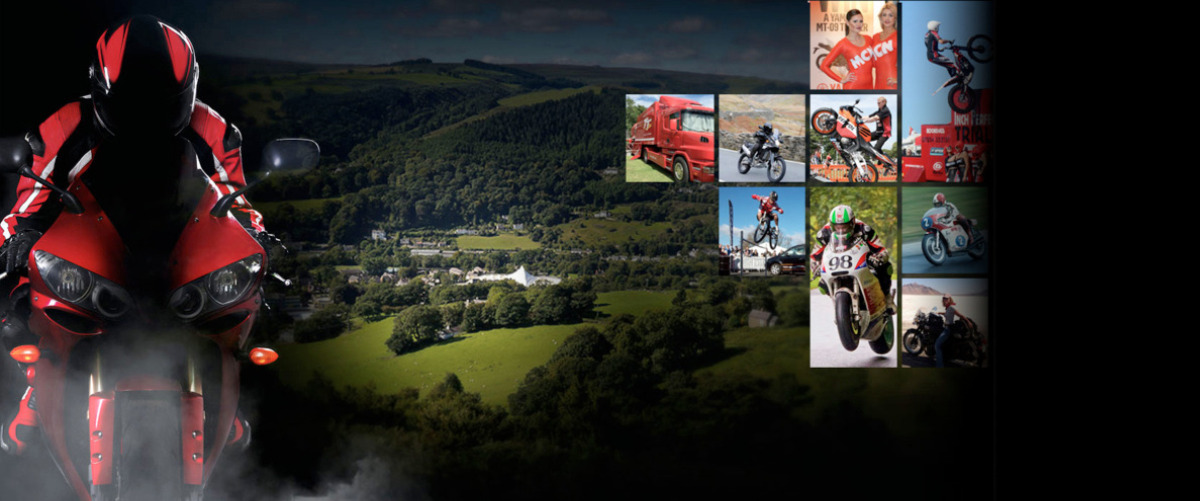
A&D Motorcycles Will Be Attending Llanfest 2018 with Suzuki
On Saturday 4th and Sunday 5th August, A&D Motorcycles will be attending Llanfest 2018 alongside Suzuki.
LlanBikeFest 2018 – August 4th & 5th
Royal International Pavilion, Abbey Road, Llangollen LL20 8SW.
Back by popular demand – John McGuinness will be at LlanBikeFest 2018. And he will be joined by BSB champion John Reynolds plus British Supersport winner Steve Plater!
John McGuinness said: “I had such a good time at LlanBikeFest in 2017 – and I will definitely be there again in August. It’s a weekend of fun and a great family affair. Hopefully I will be in better shape this year so I can get out and meet people, look at all the great bikes. I will be bringing a few more of my bike collection with me and just enjoy it.”
LlanBikeFest Opening Times
Saturday August 4: 9.00am – 6.00pm
Saturday August 4 Beer & Bands: 6.00pm – 10.00pm (included in Saturday and Weekend ticket prices)
Sunday August 5: 9.00am – 5.00pm

SAVE 10% ON A NEW SUZUKI ATV WITH THE NFU
Suzuki ATV is delighted to announce that eligible NFU members* can now receive a 10% discount on selected Suzuki ATVs to use around the farm.
The Suzuki ATV range features powerful and comfortable utility ATVs suitable for a variety of applications, with the ability to carry and tow heavy loads and help you to rule the land. From the leading KingQuad 750 with a 722cc engine, power steering, independent suspension and a sealed rear brake, to the compact but powerful Ozark 250 with a large towing capacity for its size and a highly efficient, economic engine, the Suzuki range has a variety of models available to suit every element of farm life.
The range also features Suzuki’s unique T-shaped seat and selectable 2 and 4-wheel drive options on selected models, which make the already fuel efficient ATVs even better.
This offer is available for eligible NFU members* on the KingQuad 750, KingQuad 500 power steering/non-power steering and Ozark 250 (at participating Suzuki ATV dealers only).
All Suzuki ATVs also come with free EASI rider training and a free Suzuki workwear kit consisting of overalls and a bodywarmer worth more than £40, to keep you warm and dry out in the field. They also come with a free CESAR Security System powered by Datatag, giving each ATV a unique ‘fingerprint’ with an identity that cannot be erased. This acts as a powerful deterrent and a tool for recovery should the worst happen – NFU Mutual customers receive 12.5% discount on their ATV premiums when CESAR is installed!
George Cheeseman, Head of Suzuki ATV for GB, said; “We know that a large number of ATV users are NFU members, and we wanted to partner up to offer this great discount on our ATVs. Utility ATVs are an essential part of modern farm life with large areas and tough terrain to conquer. Suzuki ATVs are well known for being reliable, powerful and comfortable workhorses for the day’s graft, which we know is invaluable to our customers when out in the field.”
For more information on the NFU Suzuki ATV discount please visit www.nfuonline.com/suzukiatv or call NFU CallFirst on 0370 845 8458.
*NFU Membership eligibility and terms & conditions apply. Only available to eligible NFU members in England and Wales.

